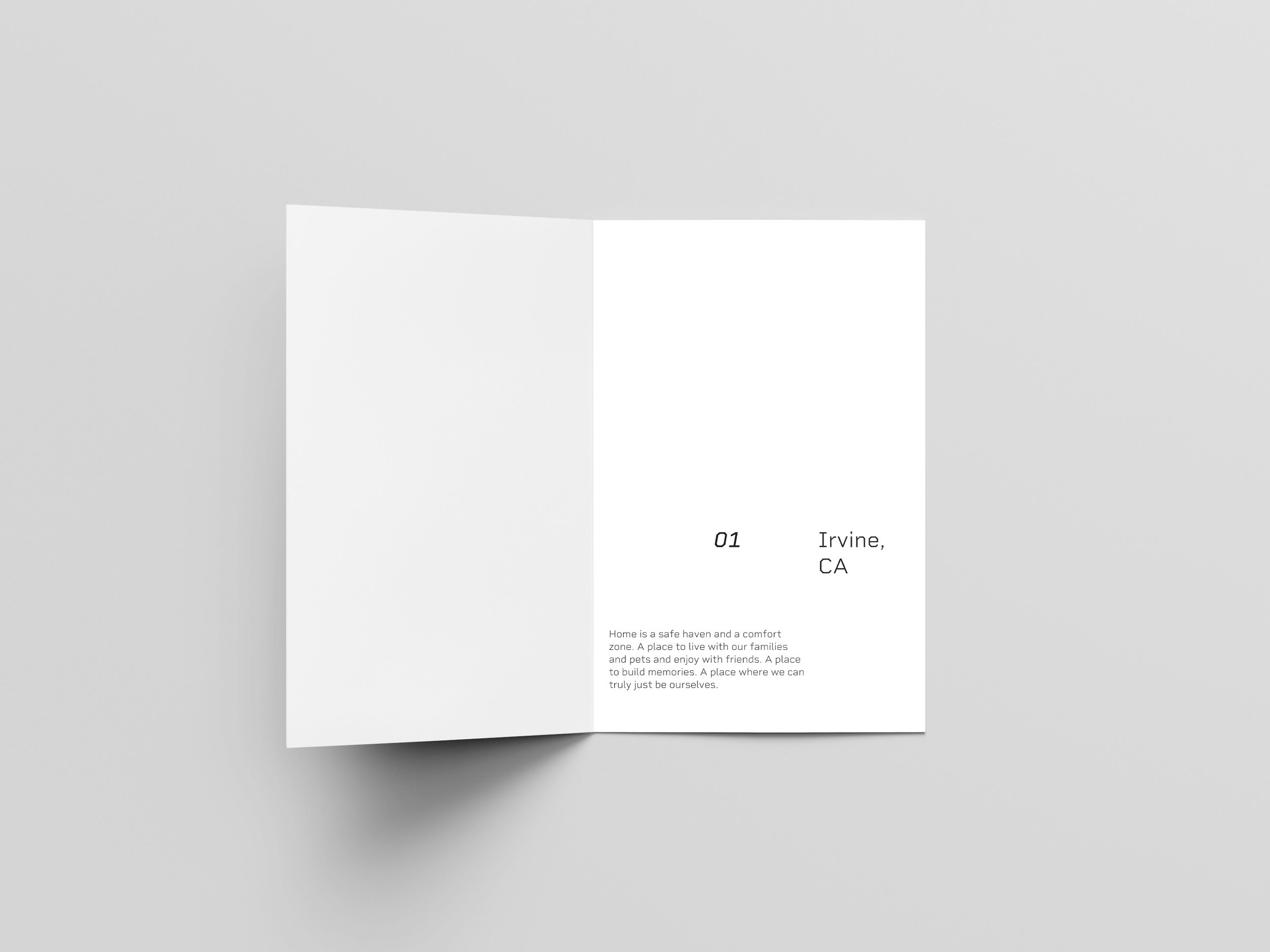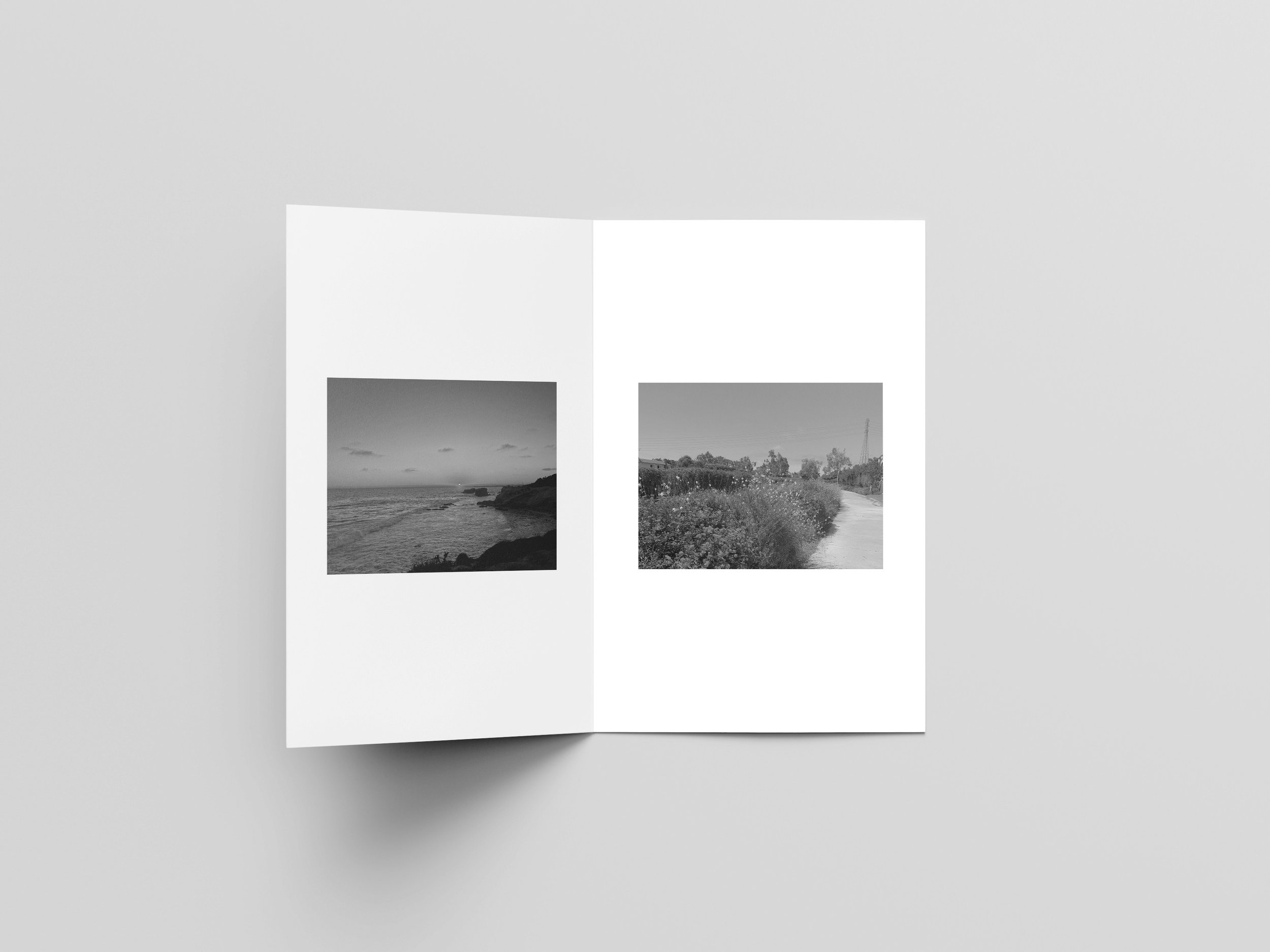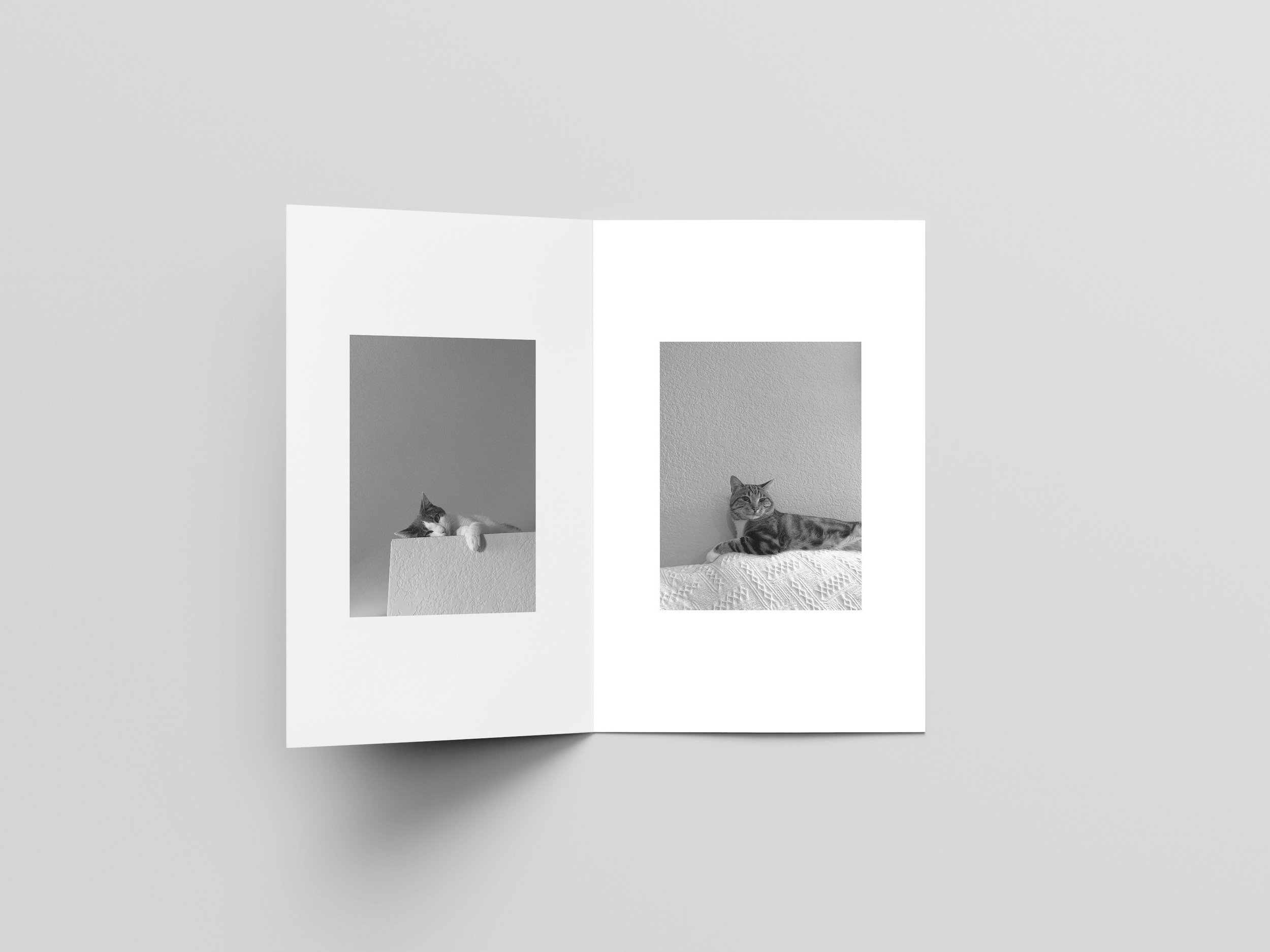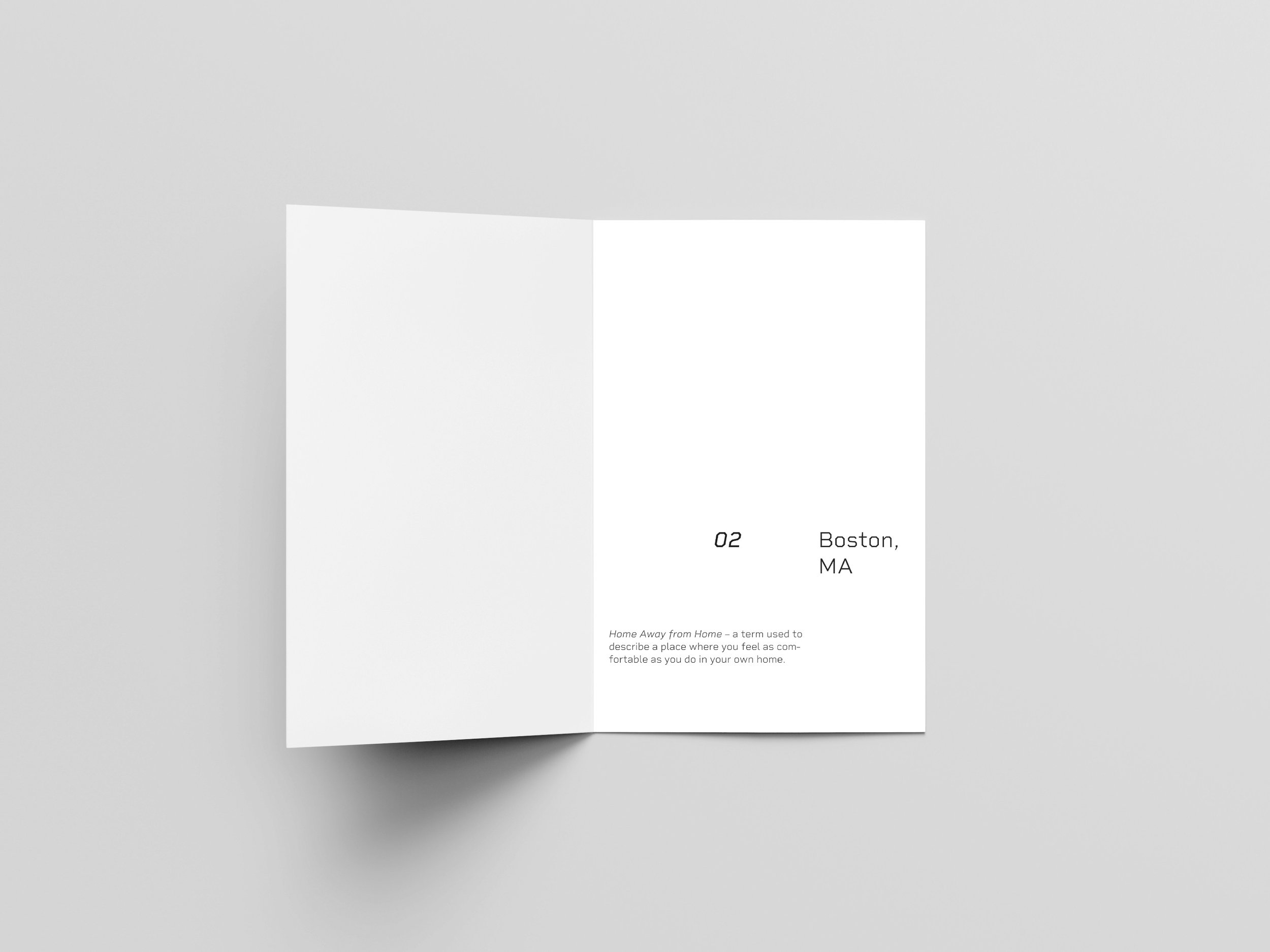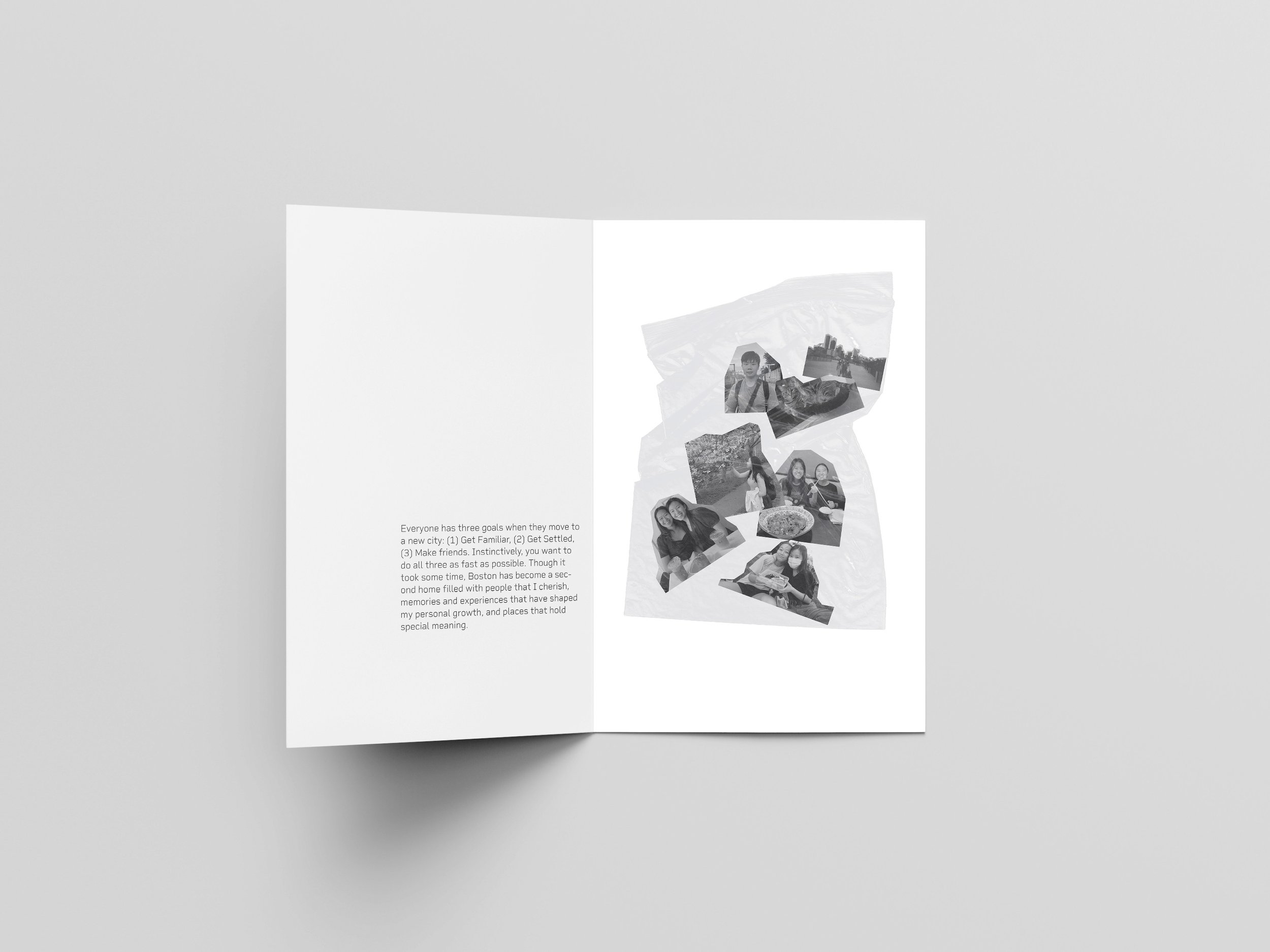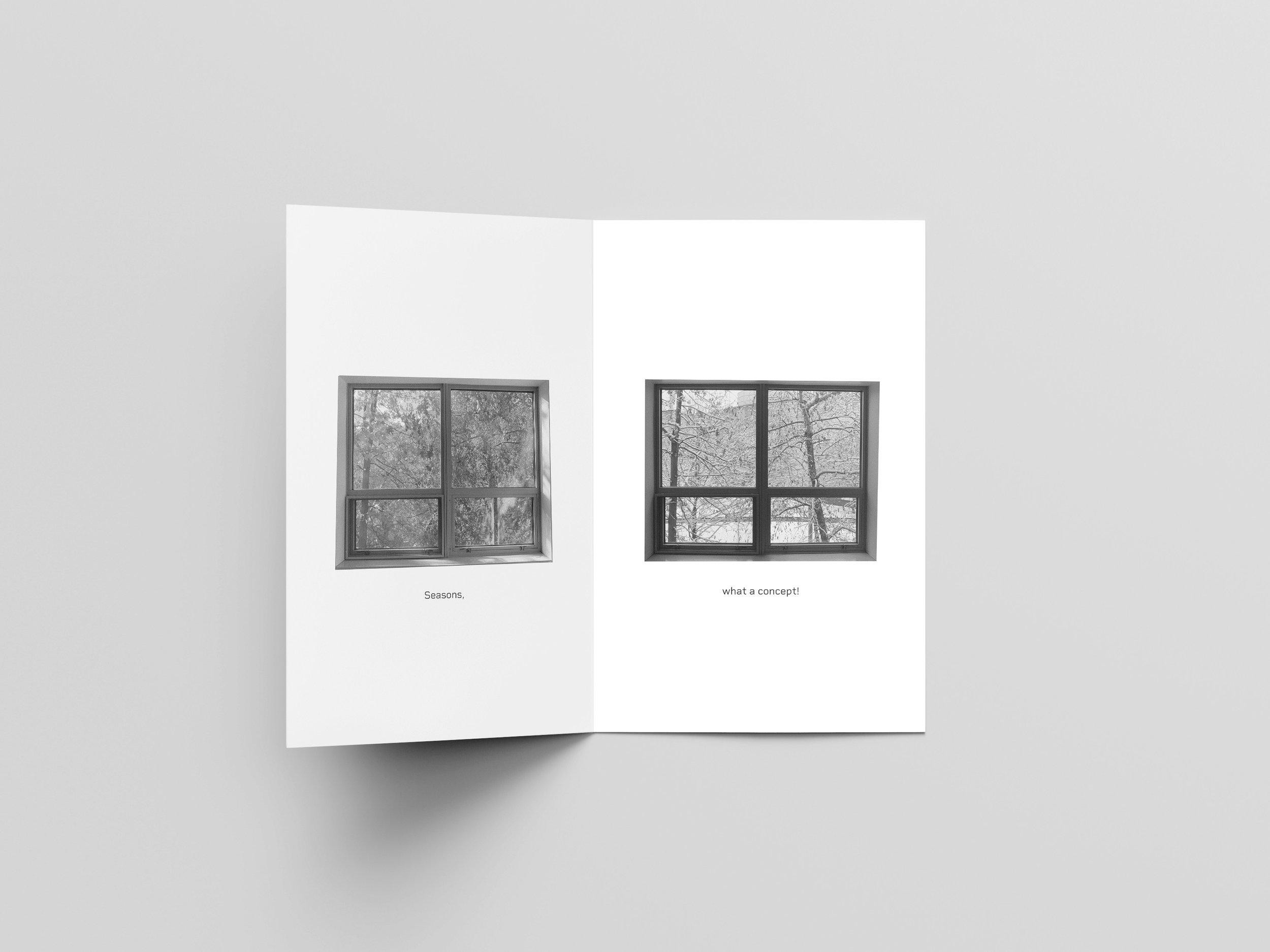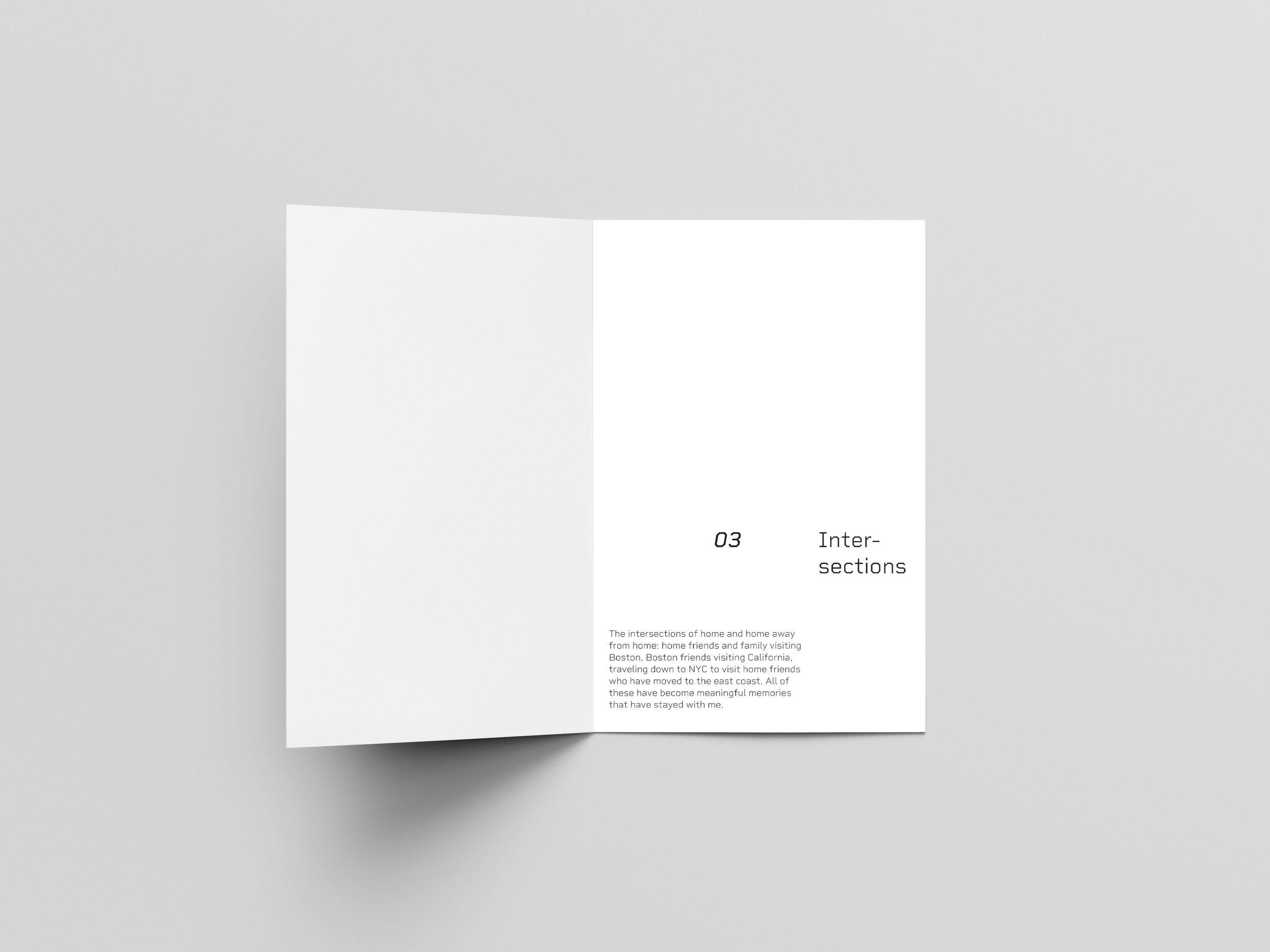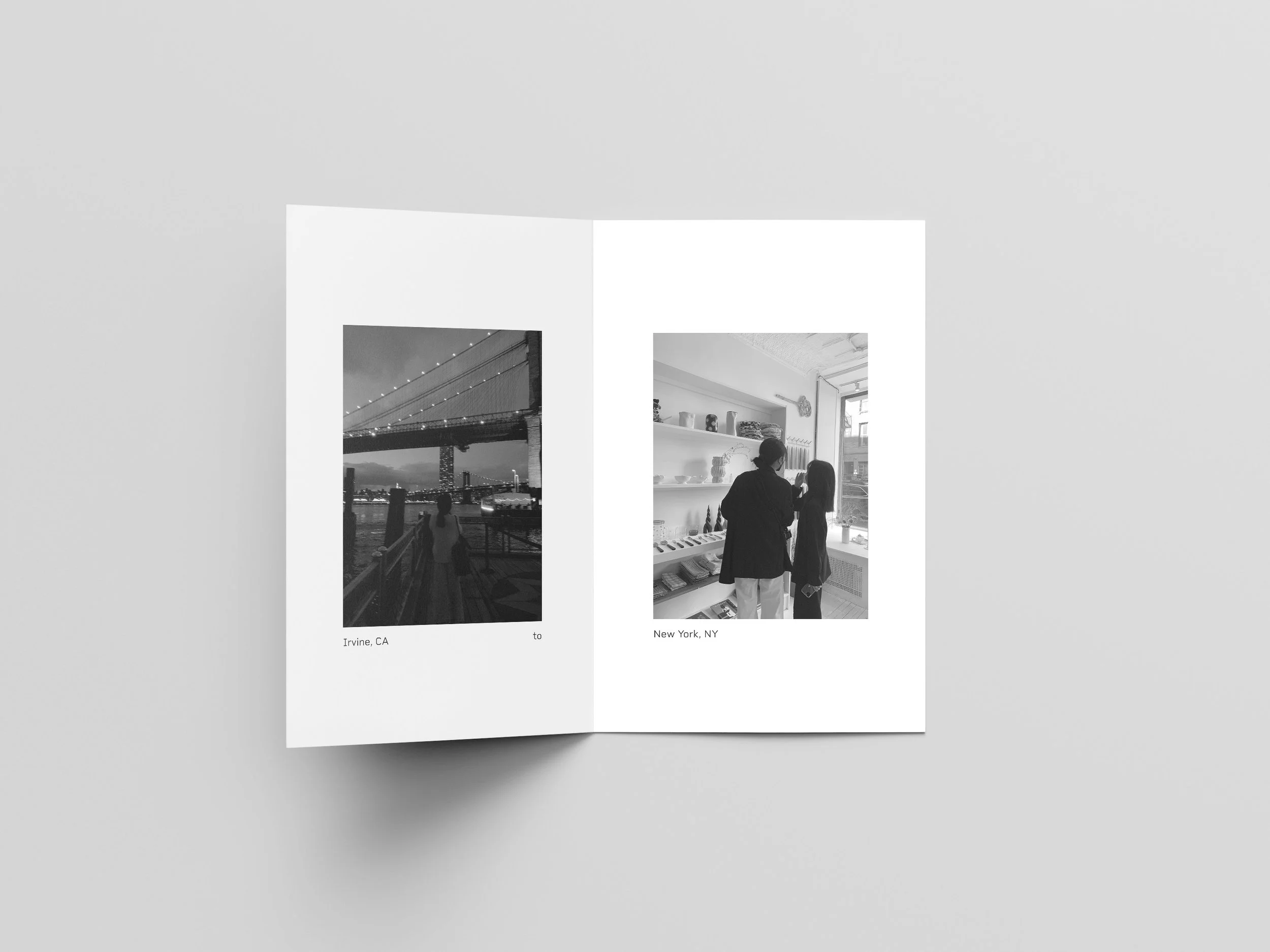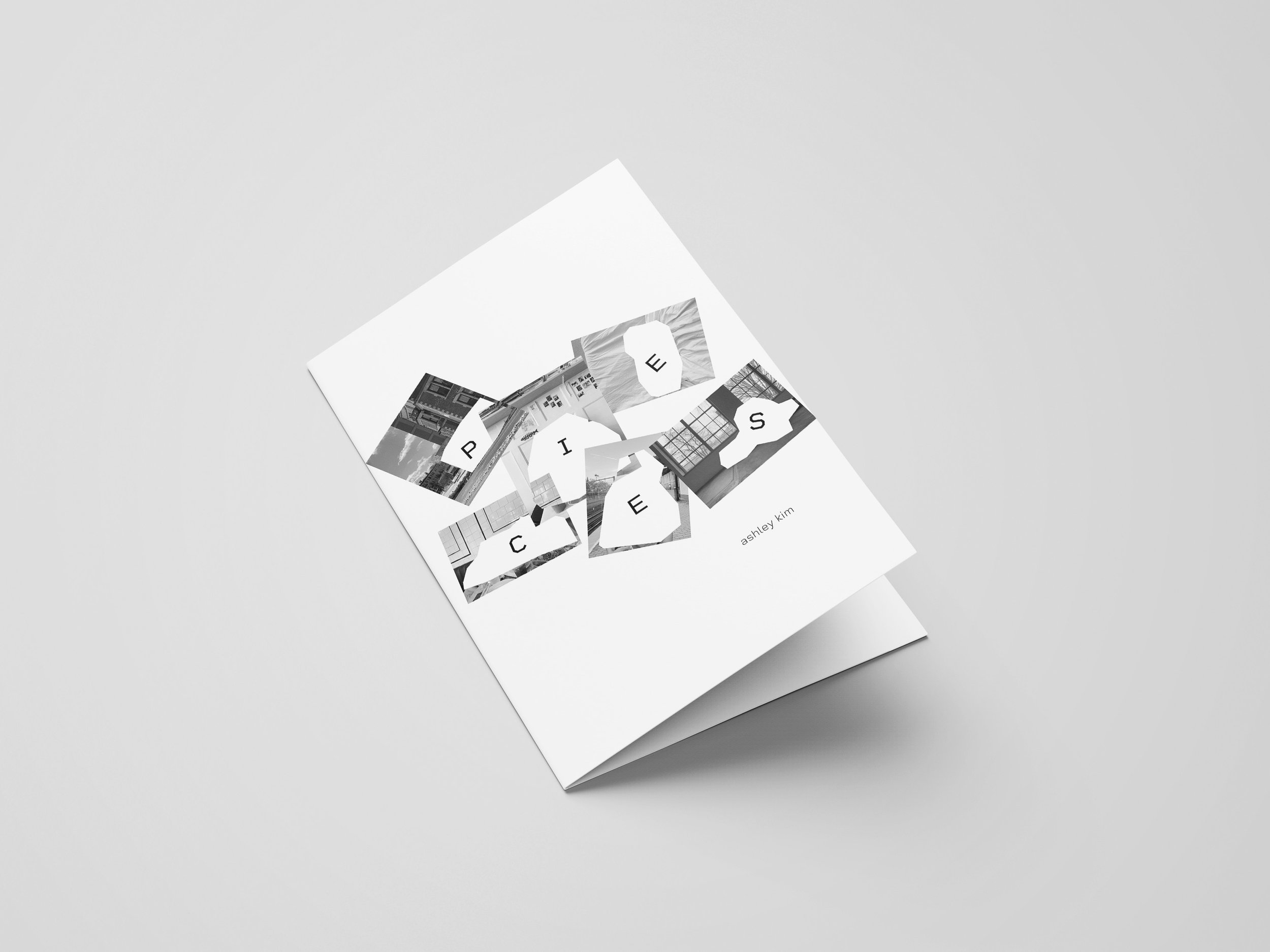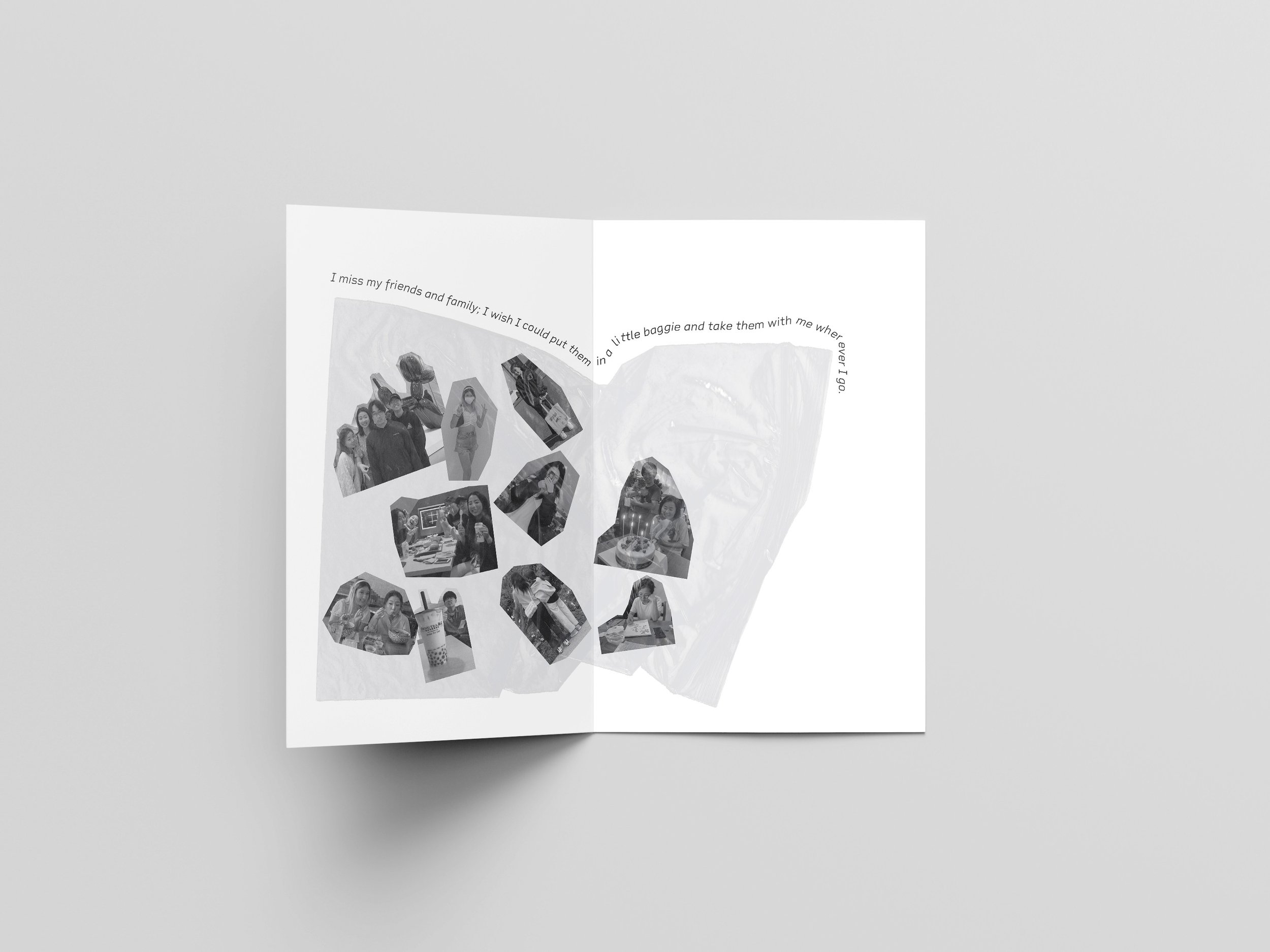SELF–IDENTITY BOOKLET
This project is about self-exploration, students were encouraged to write about their identities through the lenses of family, society, and their own.
DEVAN JEFFREY - Me, Them, Us
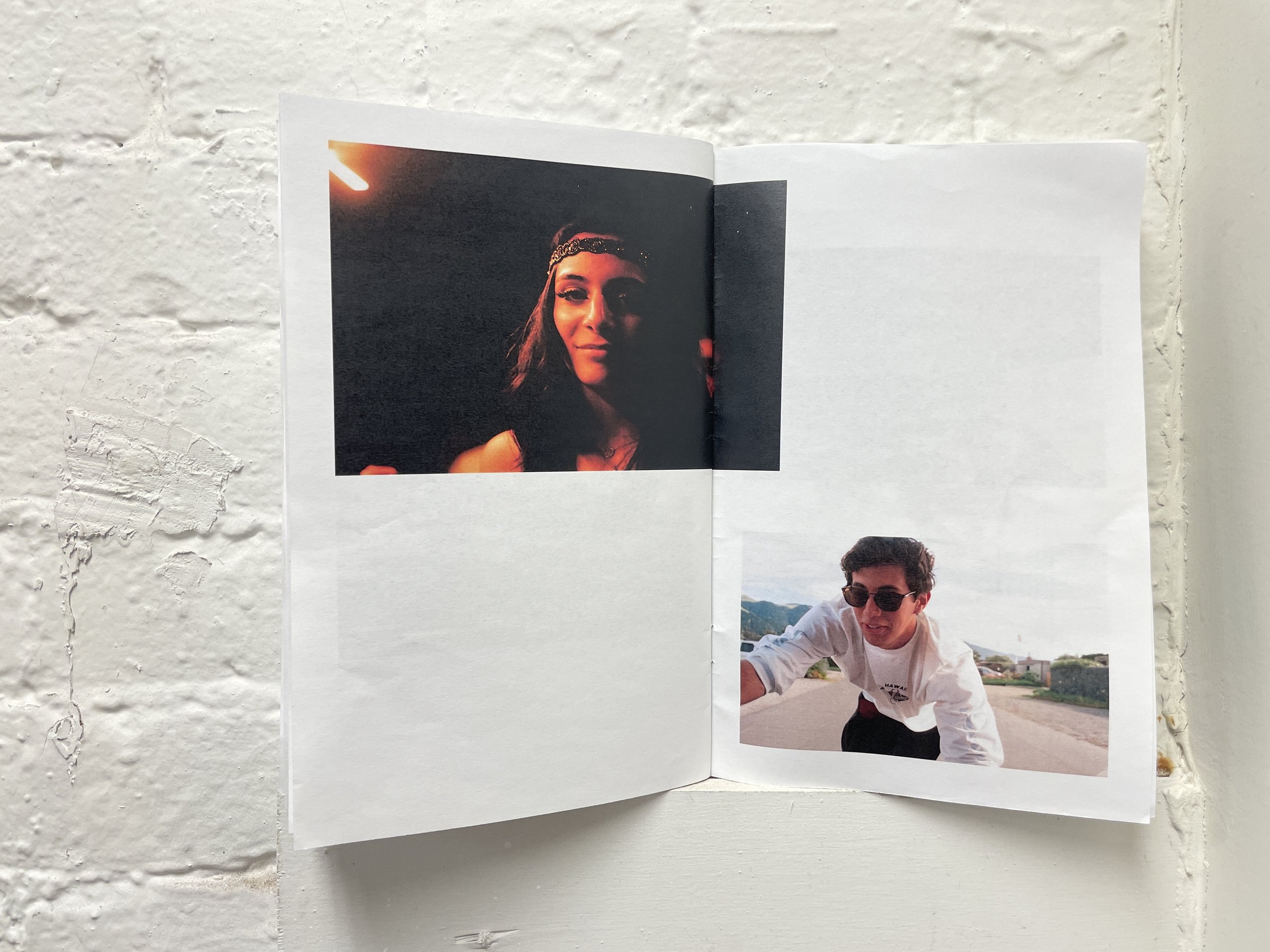
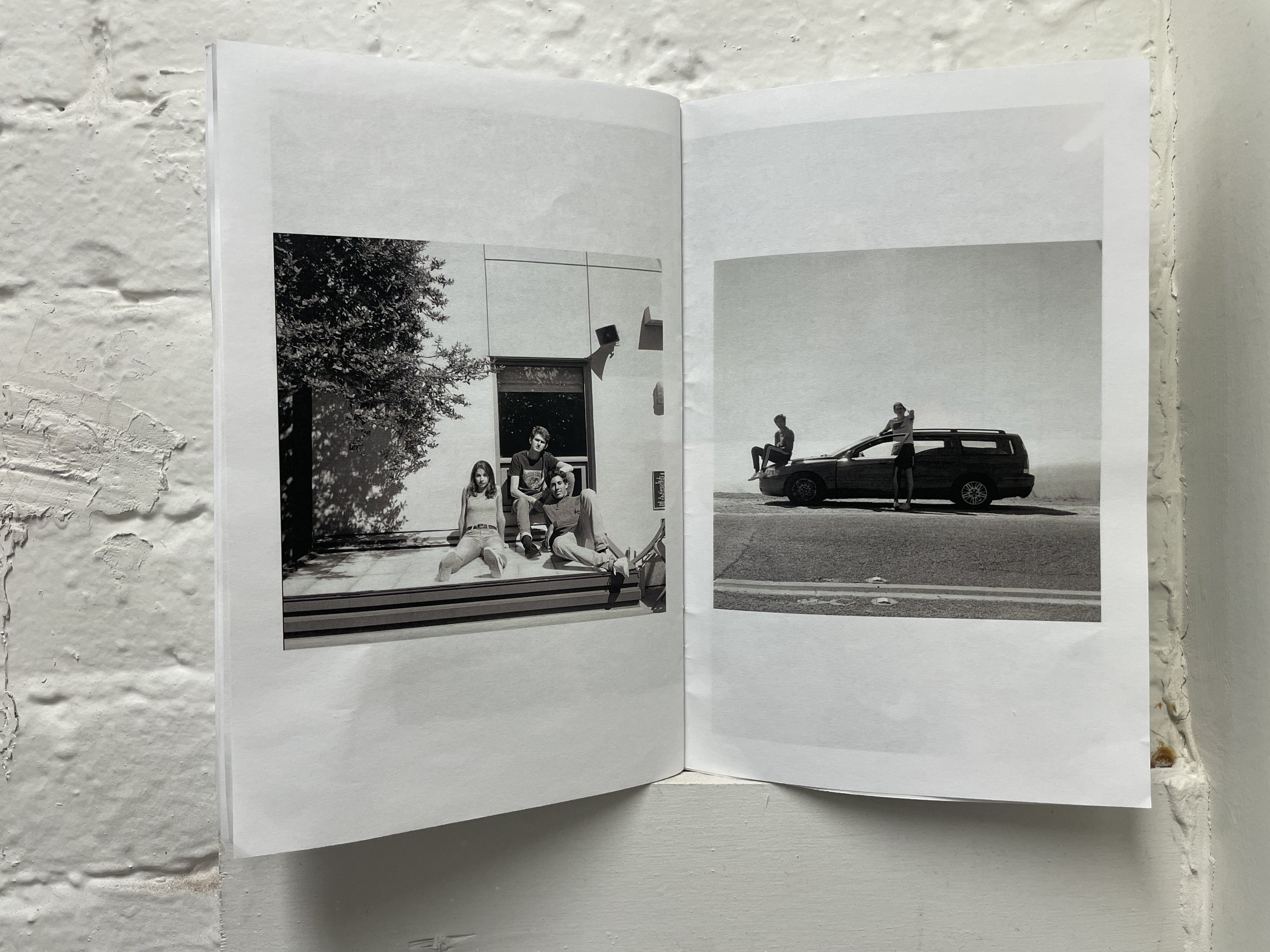
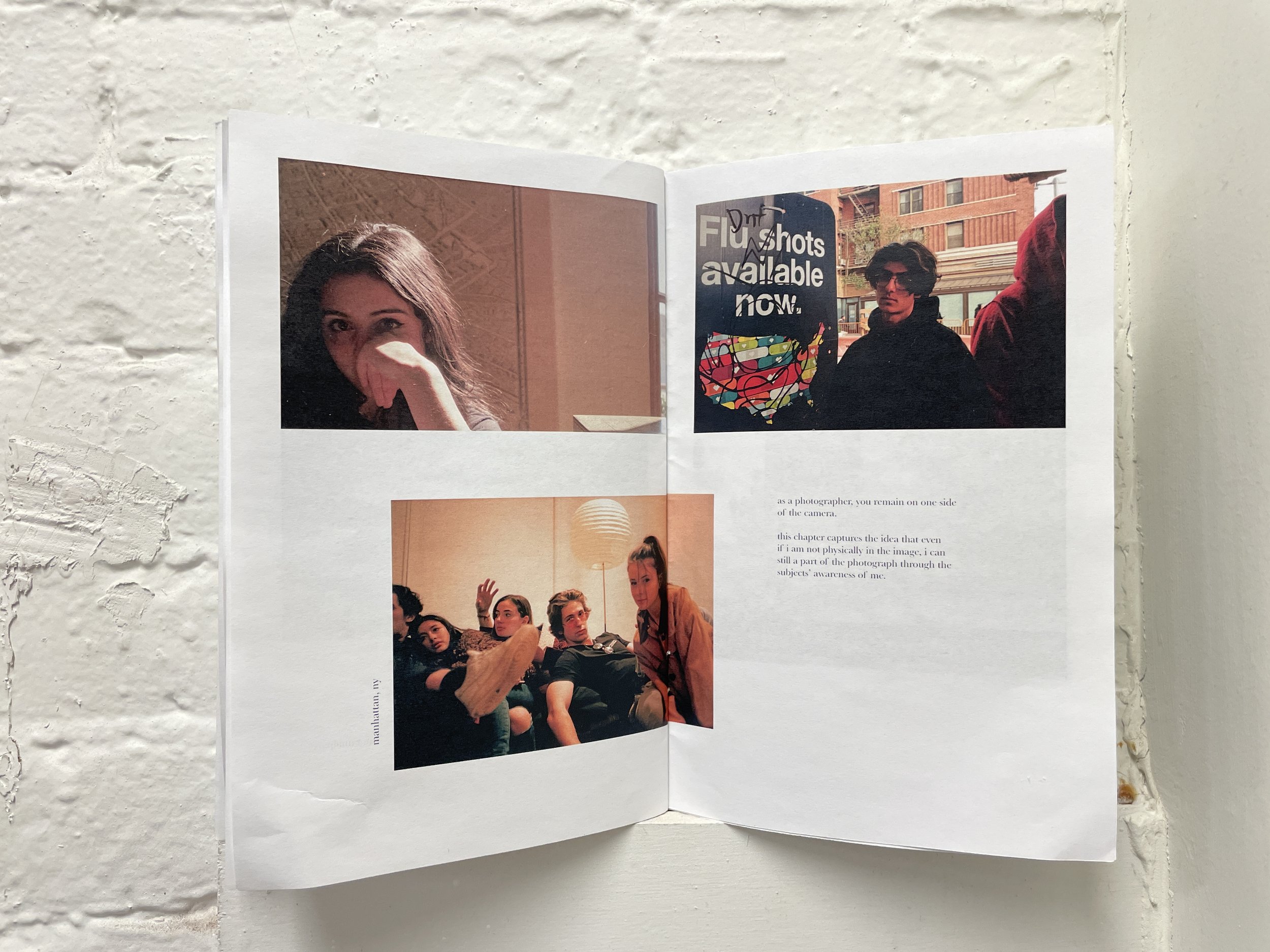
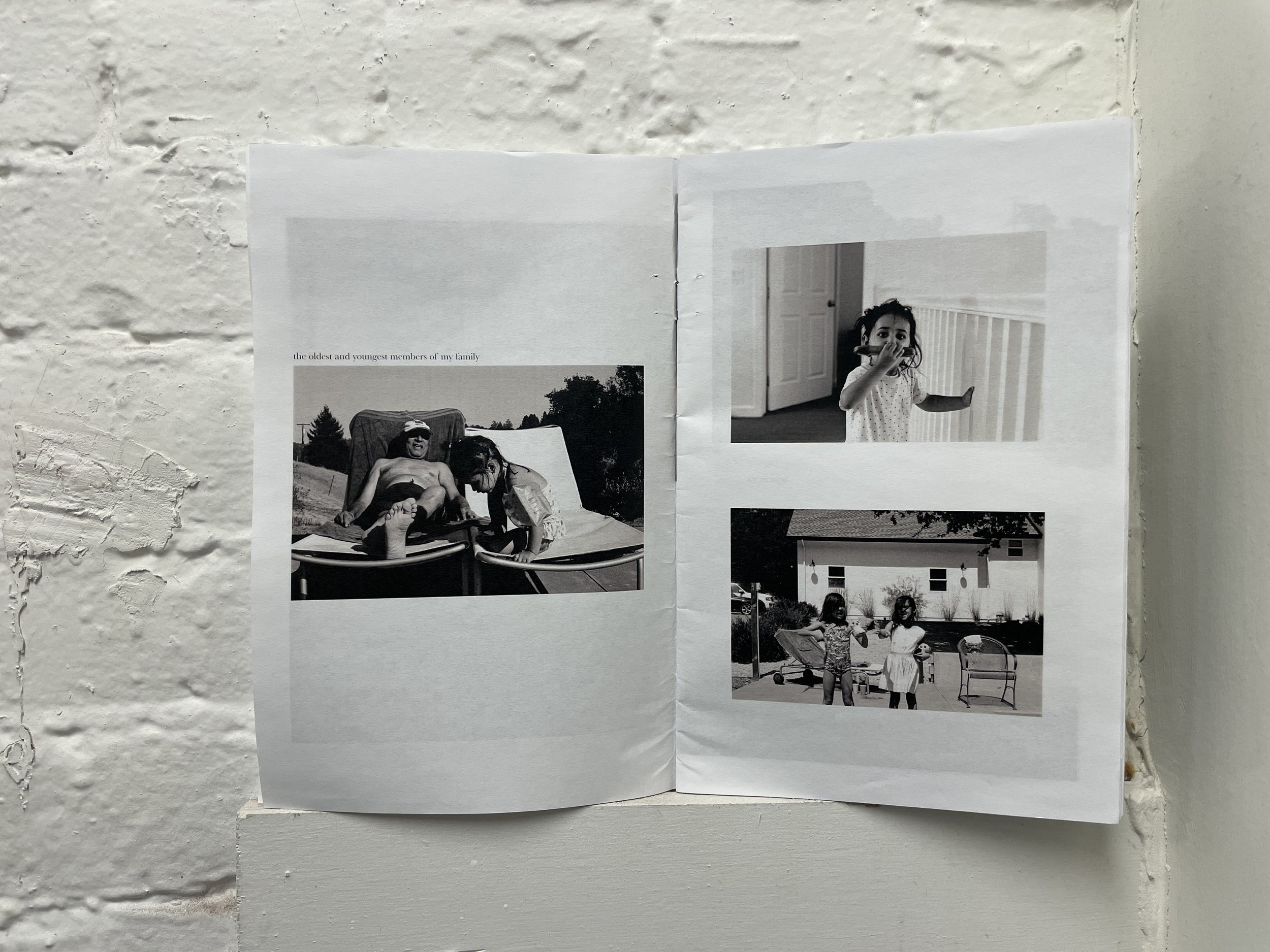
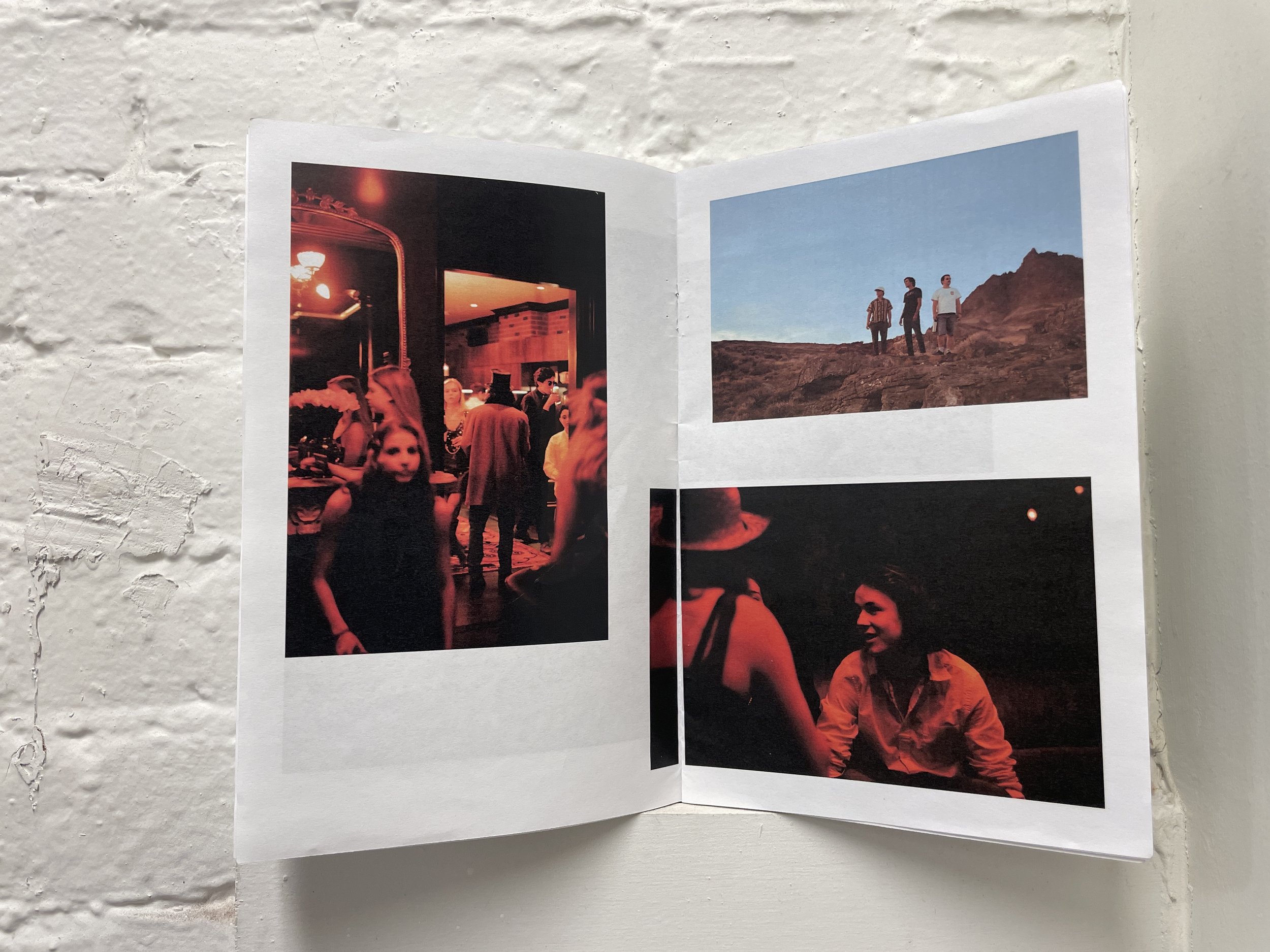
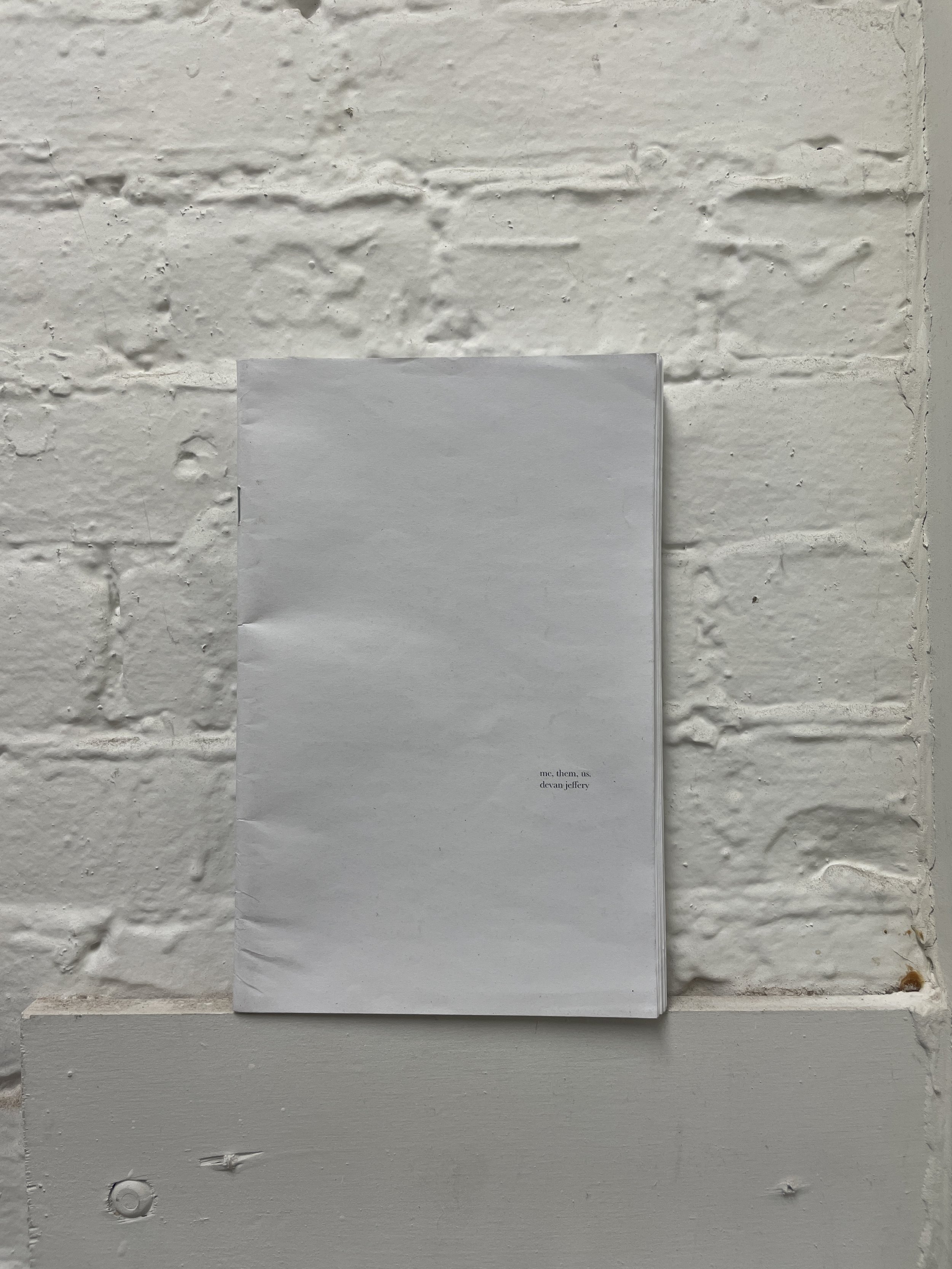
My zine is a showcase and reflection on my photography, and how I use photography to express and capture my identity. Photography has always been my primary medium for creative expression, and I have always used photographs to capture what is most important to me. My identity zine is broken up into 3 parts, titled Me, Them, and Us. The first chapter, Me, focuses on the parts of my identity that I feel most closely connected to, my family and the places that I call home. Chapter 2, Them, focuses on the people that I surround myself with who have influenced me. My friends have always been some of my biggest inspirations, and they have definitely helped me to become who I am today. In this chapter, I focus on these people entirely, and in these photographs, I am nothing more than an observer, seemingly removed from the subjects. In chapter 3 however, I chose to showcase my interaction with these people. As a photographer, being part of the photograph is a challenge, yet it can be represented through the subject’s interaction with me and the camera. I have always been on the same side of the camera, and I actually don’t typically enjoy being in photographs. This is why I chose to remain absent from this zine in a physical sense. That said, the third chapter allows me to show how even as a photographer I can interact with the subjects, and how they can interact with me. There are very few bodies of text in this zine, and this was mainly because I felt that my photos can speak for themselves. I have always appreciated visuals more than words and using photographs to express my identity rather than words felt more personal.
Devan Jeffery
VANESSA CHEN - Identity Zine
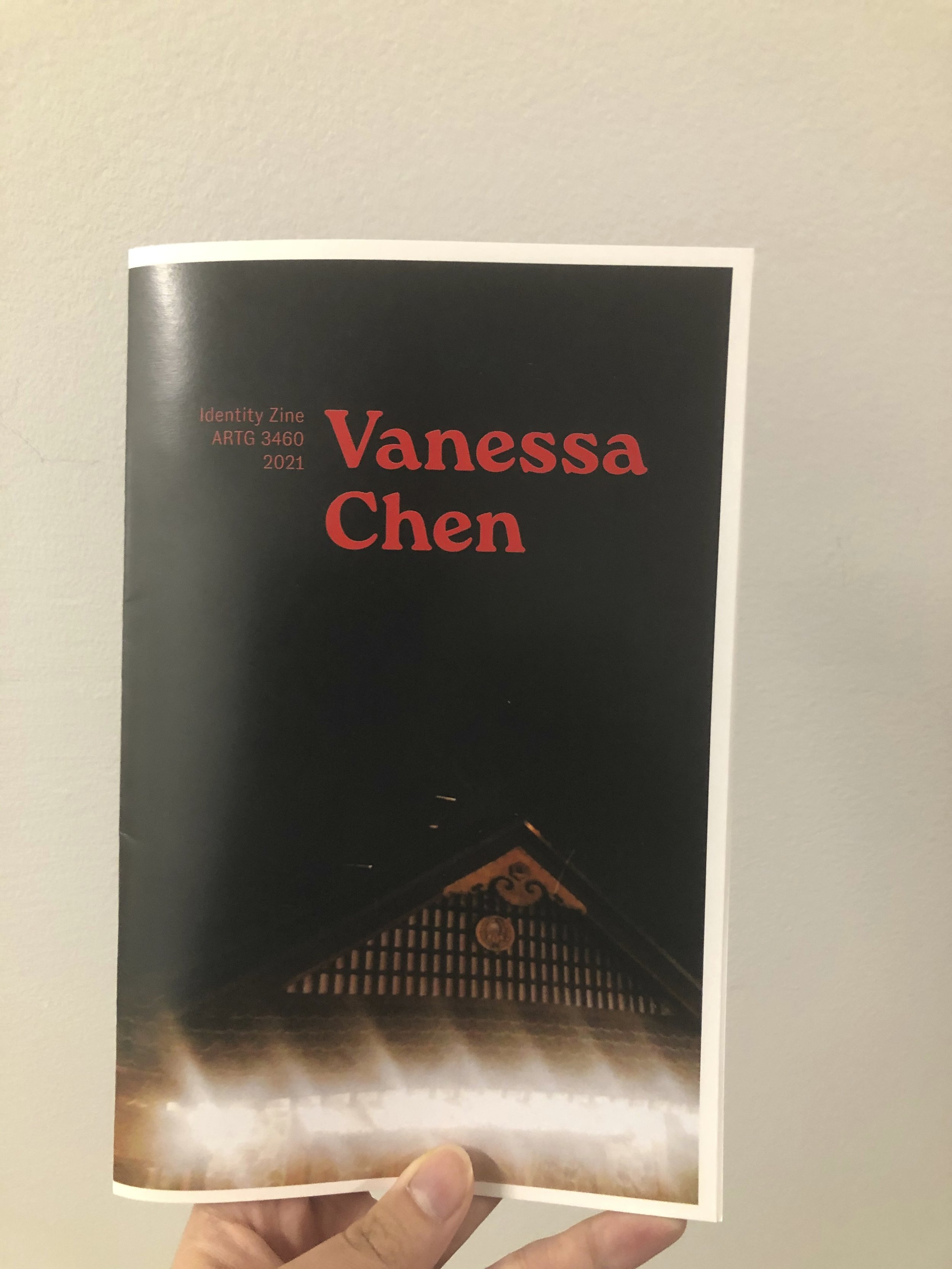
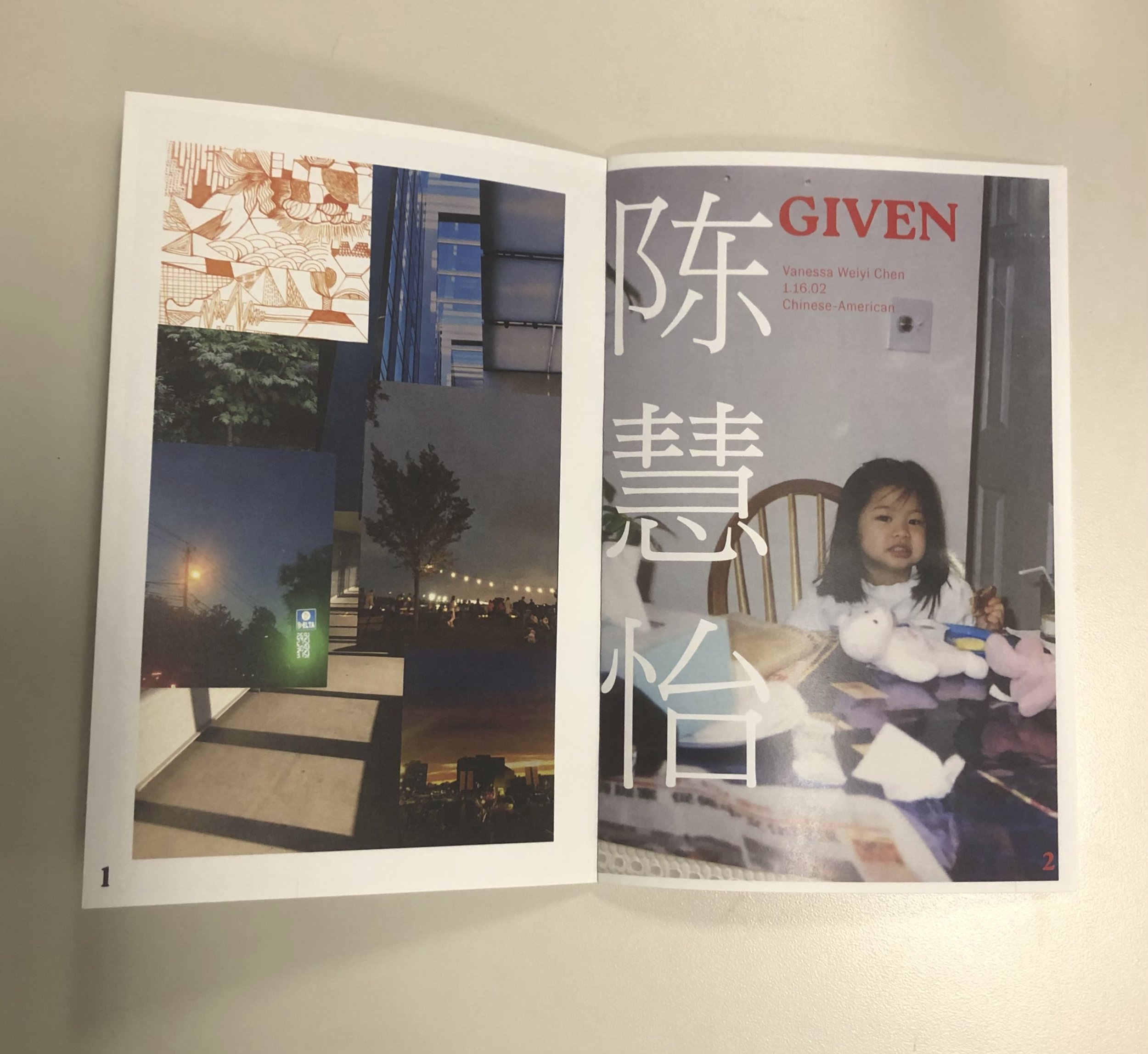
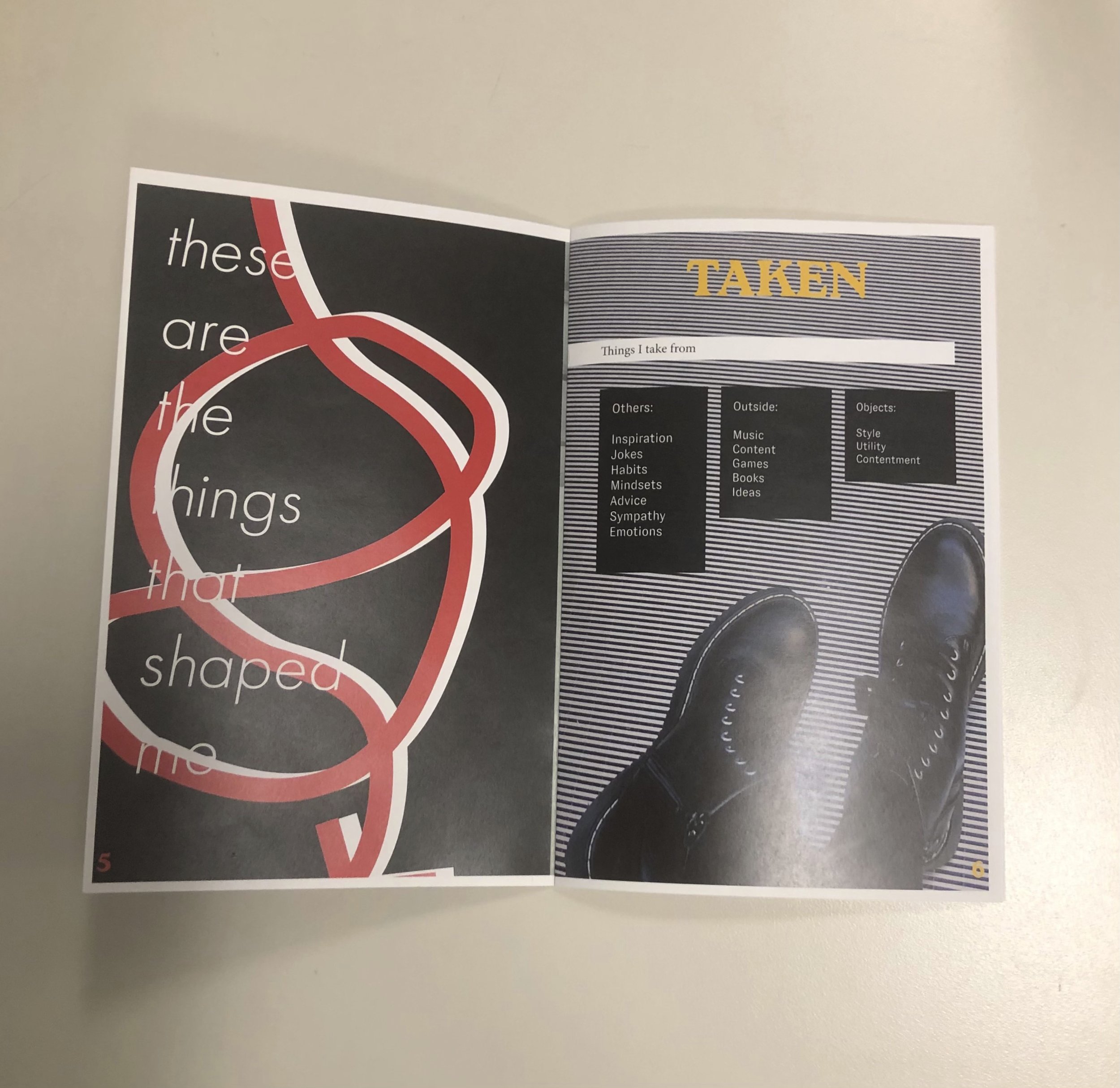
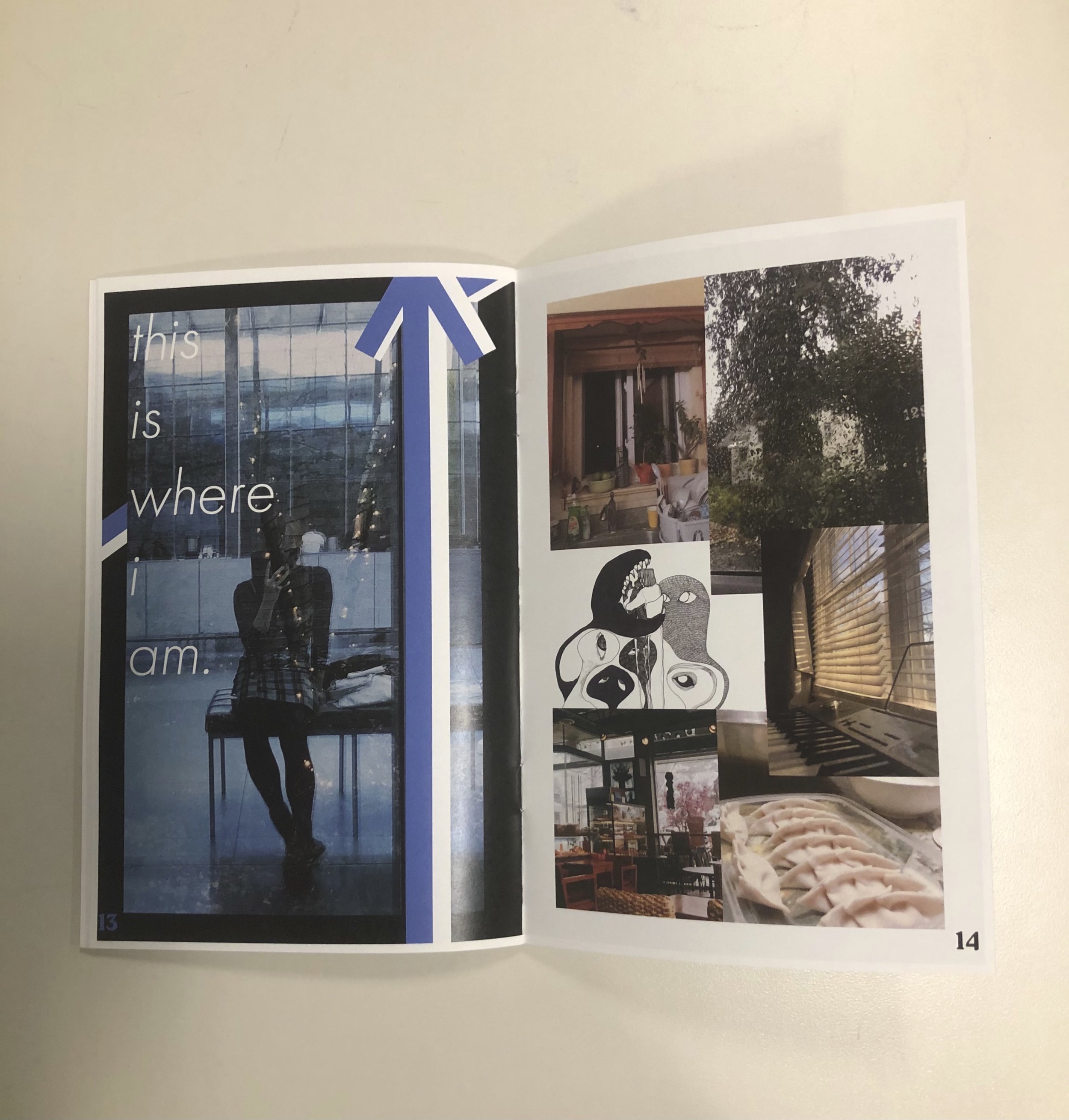
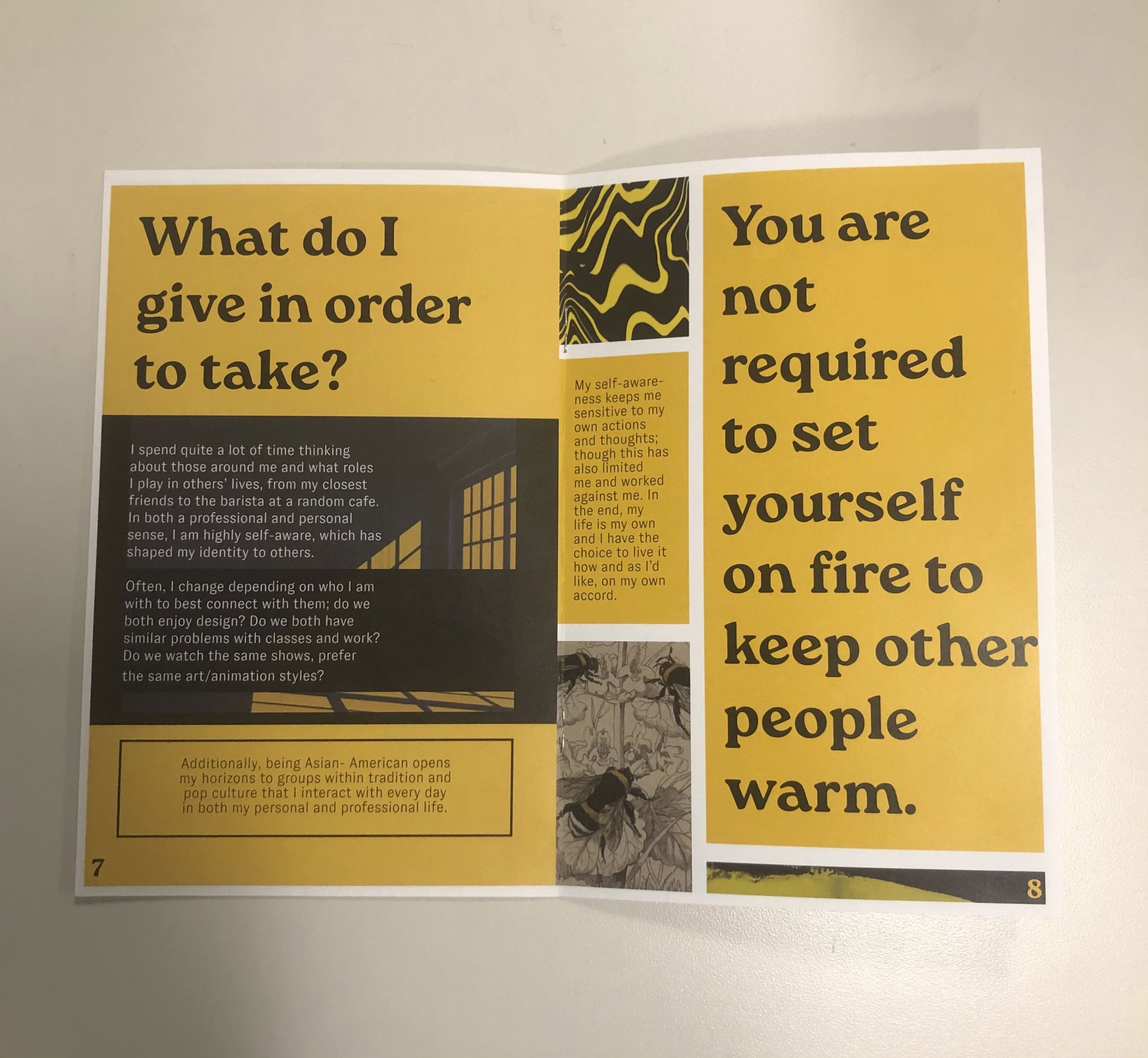
My identity booklet is a closer look at into all of the factors that make up who I am today. Split into three chapters of “Given”, which includes my given characteristics both physically and emotionally/mentally, “Taken”, a collection of outside and environmental influences in my life, and “Created”, an overview of where those elements have brought me today and what I do with them, this booklet delves into a reflection of my life so far. With a cluster of negativity and tight lines, I visually express how I began to loosen up for the better, as well as pursue a less harsh outlook on my personal and professional progress.
Additionally, my booklet expresses my exploration with layout, as I gave myself the freedom to experiment and play with the overall arrangement. To create my own distinct personal brand, I sought to hone in on my liking of higher contrast, bold, and illustrative qualities in design. Not only did I want to communicate through words, but I also sought to incorporate my own illustrations and photos into my “brand”, as they play and have always played a significant role in my life, as well as who I am. Another small personal touch was adding my younger brother’s artwork on the back cover, which gives a tinge of nostalgia and draws my personal connection to my work.
Learn more about Vanessa Chen
CHUCHEN YANG - Longitude and Latitude
This is the place. The coordinate shifts, everything swifts, but what remains inside is still the same.

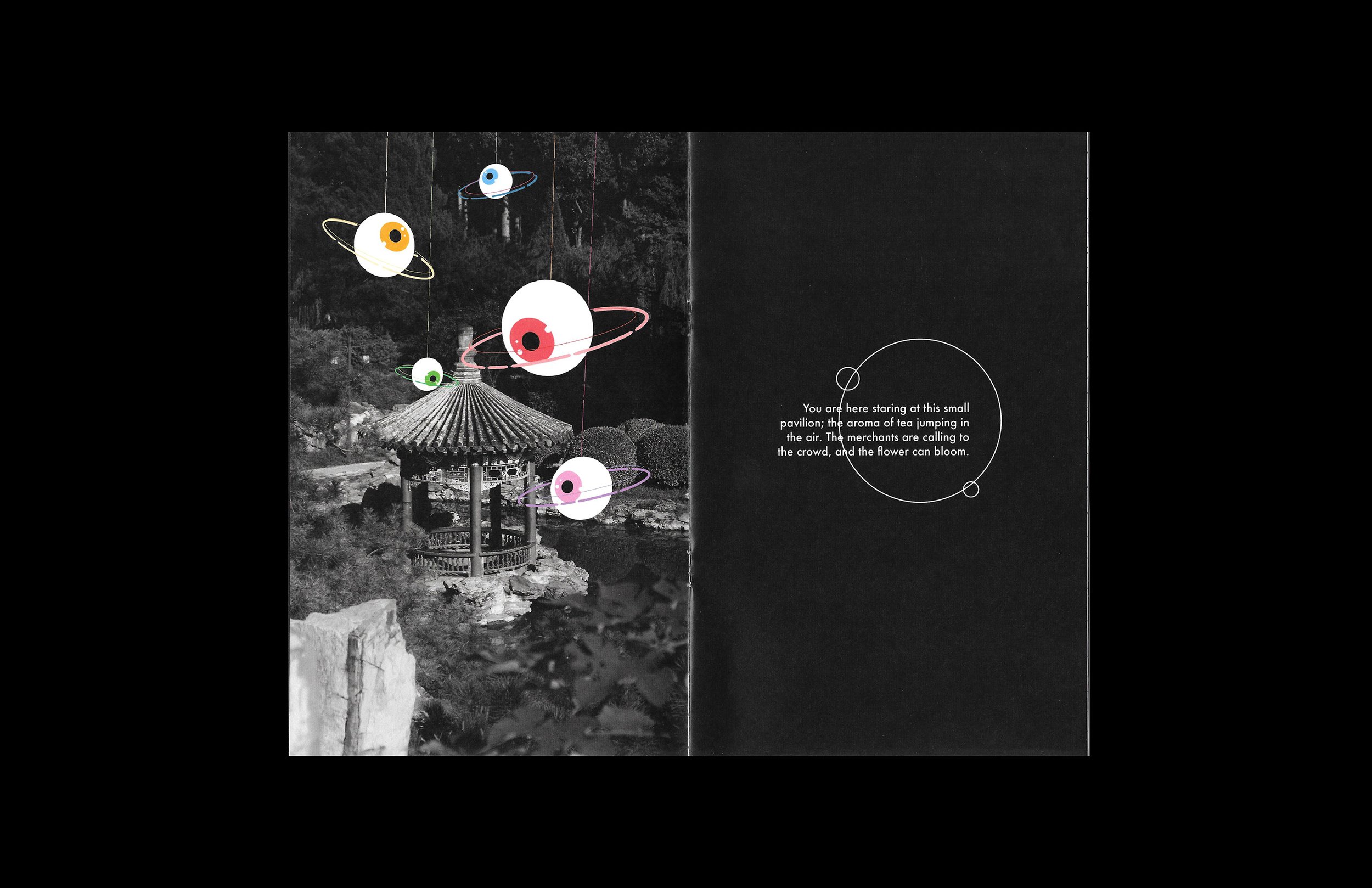
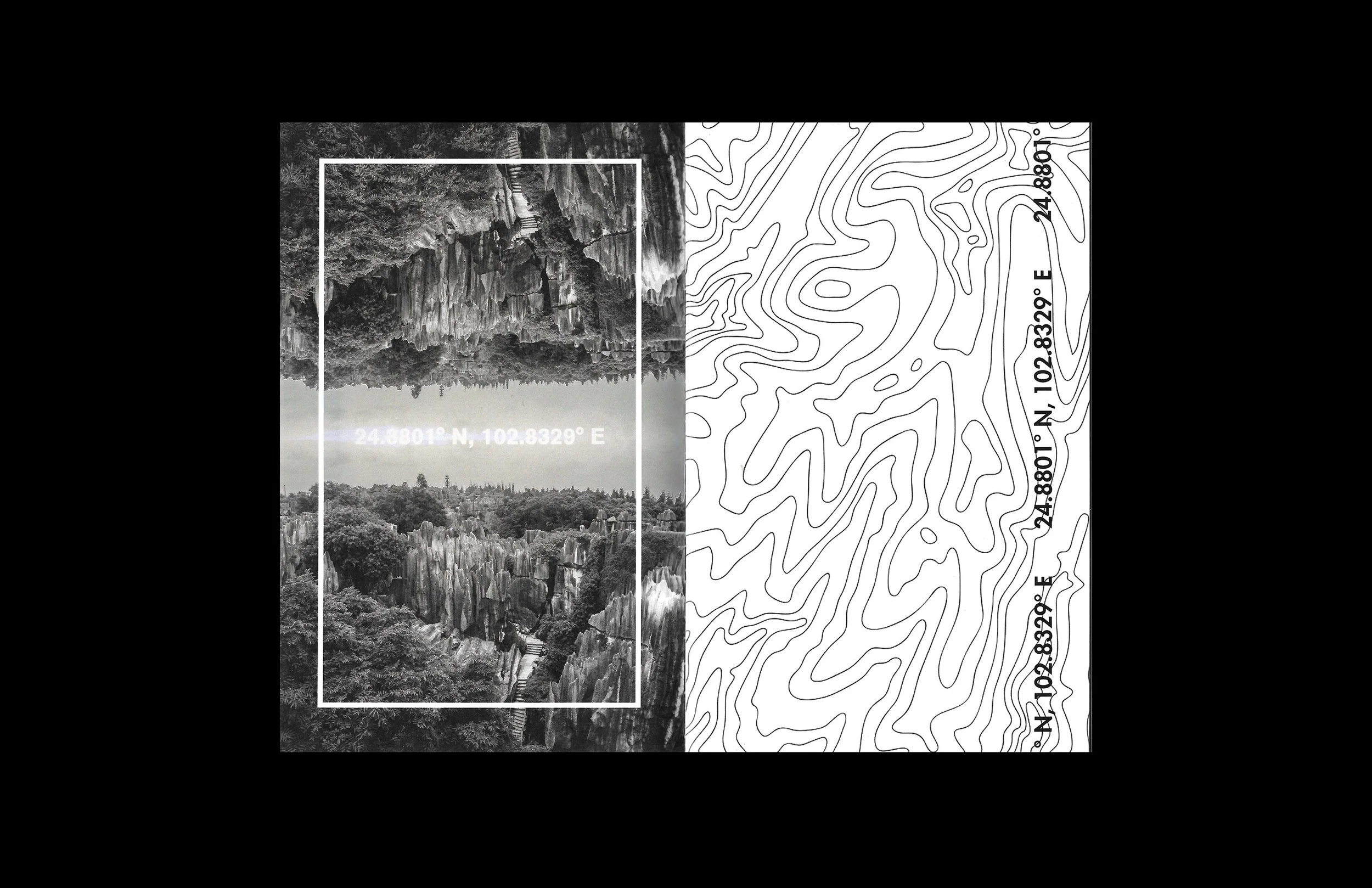
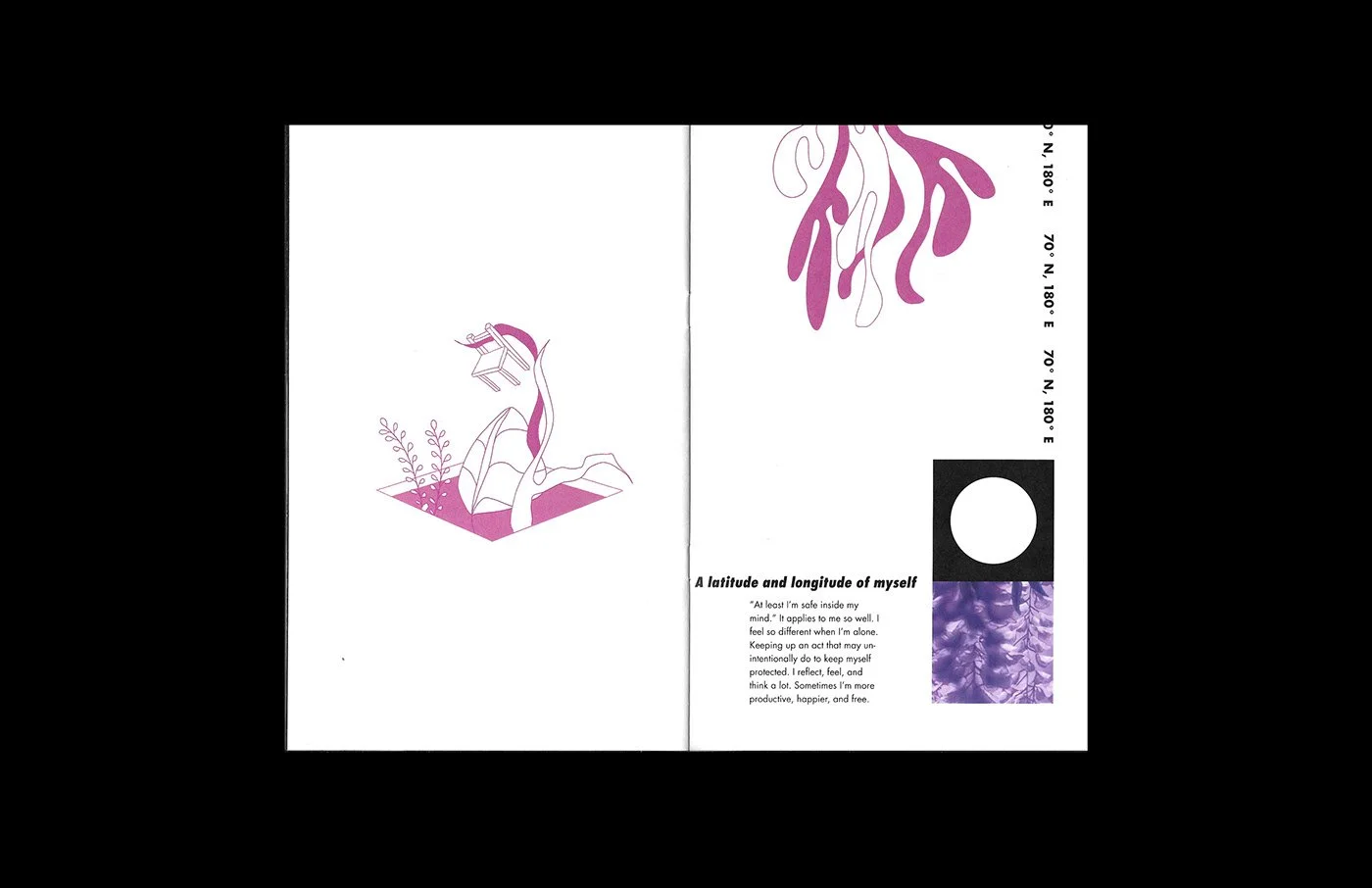
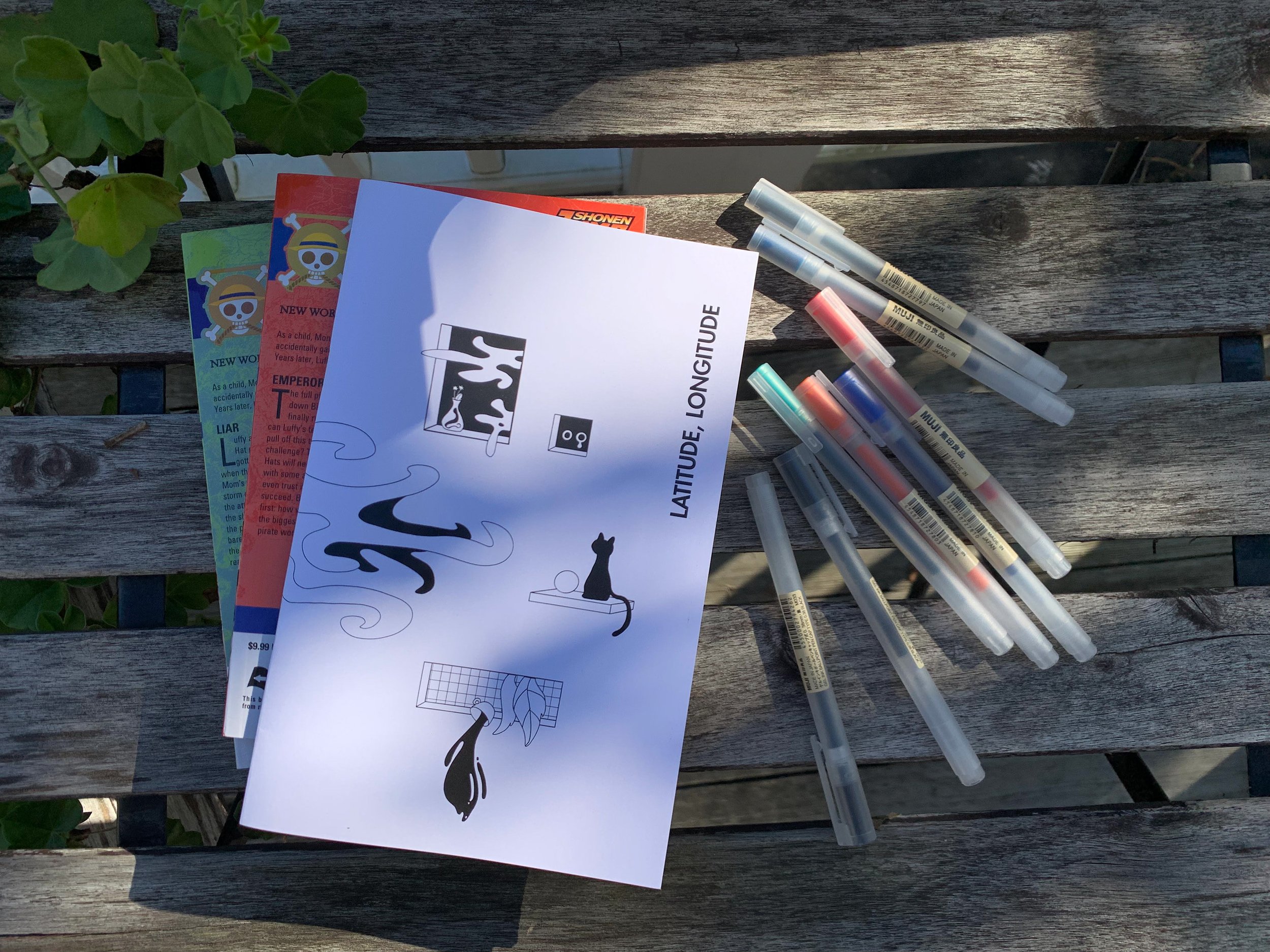
For my self-zine, I exploited some of the elements that are important to me. The three chapters in the zine are Biogenic Nature, Sociogenic Nature, and Idiosyncratic. I labeled each with a latitude and longitude of places. The first one is the coordination of my hometown, Kunming, Yunnan, China. This is the place I was born and spent my childhood. The second chapter's name is the coordination of Boston, the city I study abroad. The third chapter's coordination is an imaginary space, indicating the inside of my mind, which means something unique to me.
24.8801° N, 102.8329° E is the longitude and latitude of my hometown, Kunming. The province has complex geographic features, and one of the famous attractions is the "Stone forest." My family often went hiking in this maze made with groups of giant uplifting stones, and the road became hard to navigate sometimes. Although the city is known as very peaceful, I've always felt not fit in the place. There are so many things going on outside the world, but this place is rather shut-in. I chose the colored drawings on top of black-white on top of black-white photos to illustrate the contrast.
The second chapter begins with a new longitude and latitude. I came to Boston to study abroad, and this is where my life had a new turn and where I met many new people. Although prepared for living in a new place, I was overwhelmed by how different I was and how hard to maintain friendships or get along with people. People usually describe me as not straightforward, because my fear of being judged often got me. However, they helped me to overcome my difficulties, and it was not an easy route. The uneasy route is shown in the wavy lines from the topographic map. This chapter has more colored illustrations and a personalized Boston map of my memories with friends.
70° N, 180° E doesn't exist on the map. I use this coordination to indicate the position of my mind. I believe the mind is what makes each person unique. My mind is filled with lots of stuff, and I often think a lot. There are lots of windows and I put different things in each of them. There are my happiness and sadness, my confusion and clarities, etc. They are complex, just like the topographic maps. Maybe hard to navigate, but once you get the method, I'm easy to read.
Learn more about Chuchen Yang
LUCY PURVIS - IDENTITY
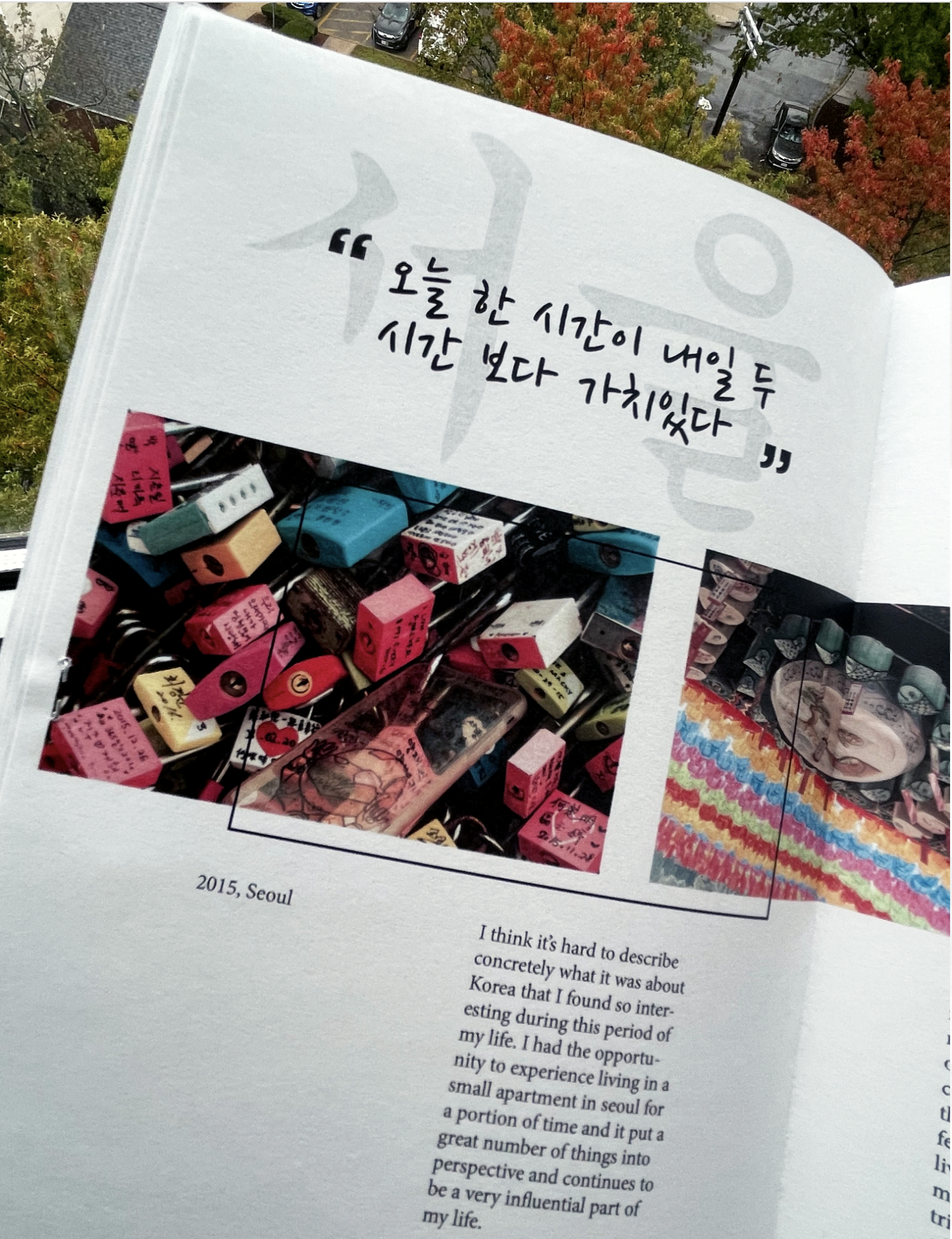
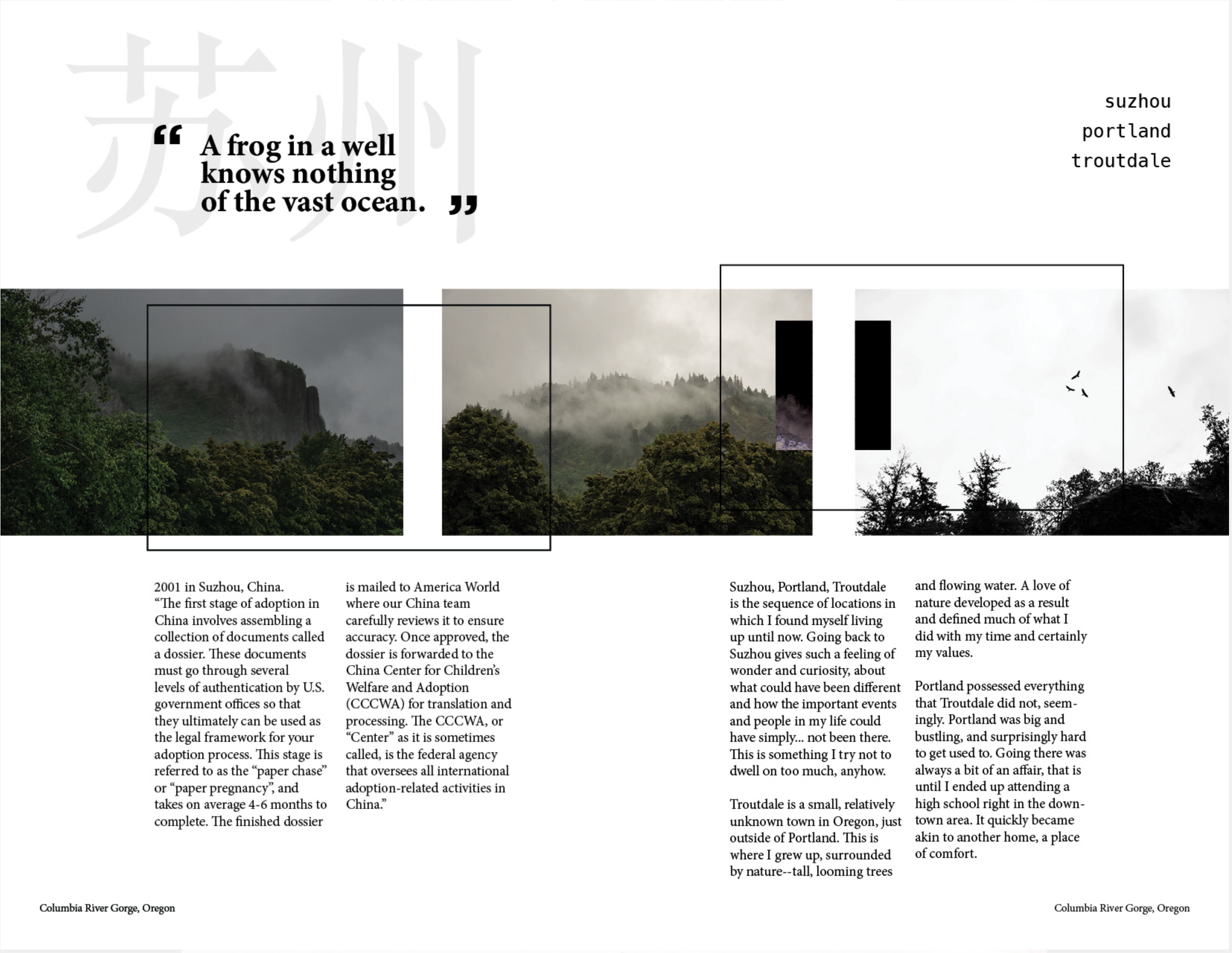
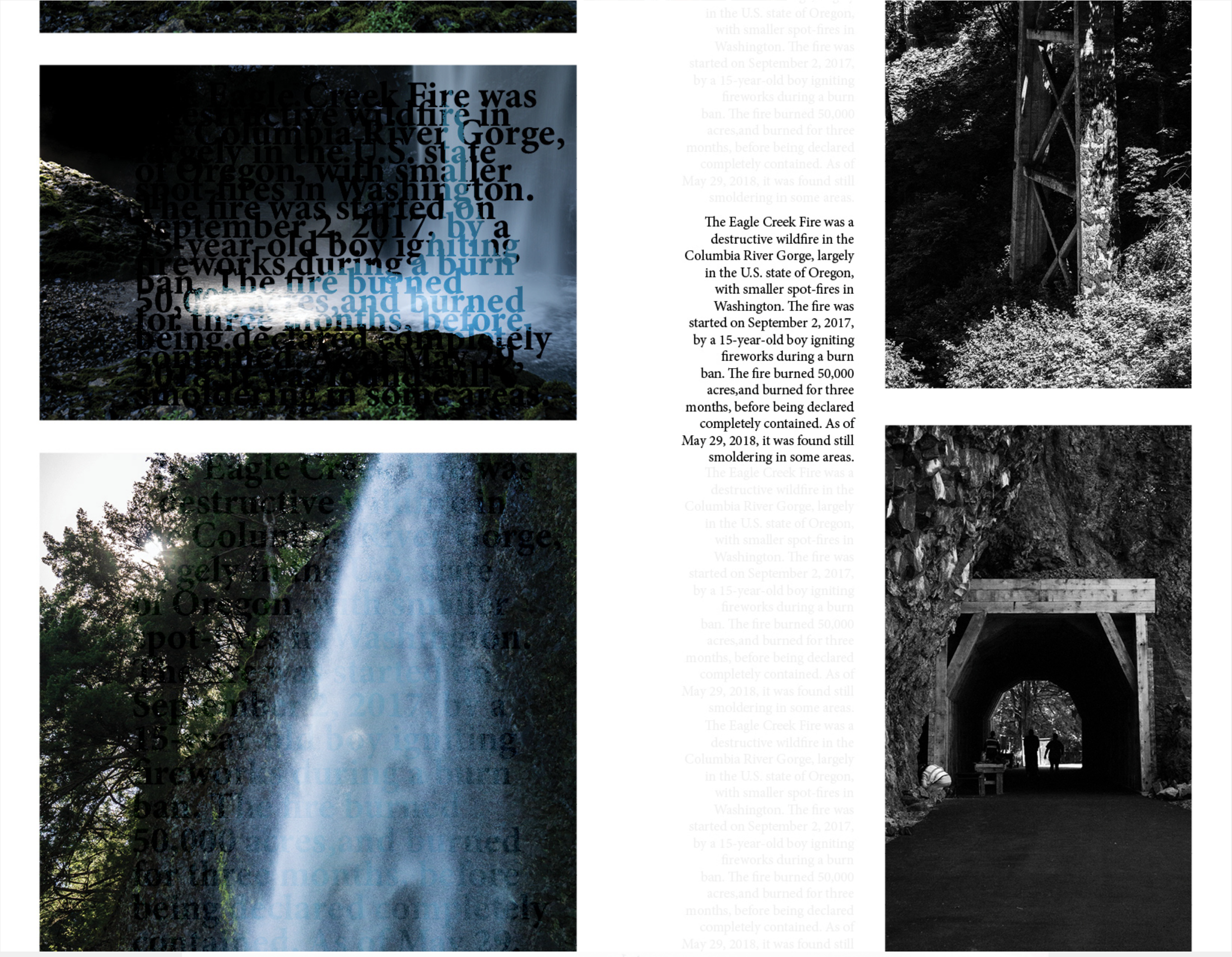
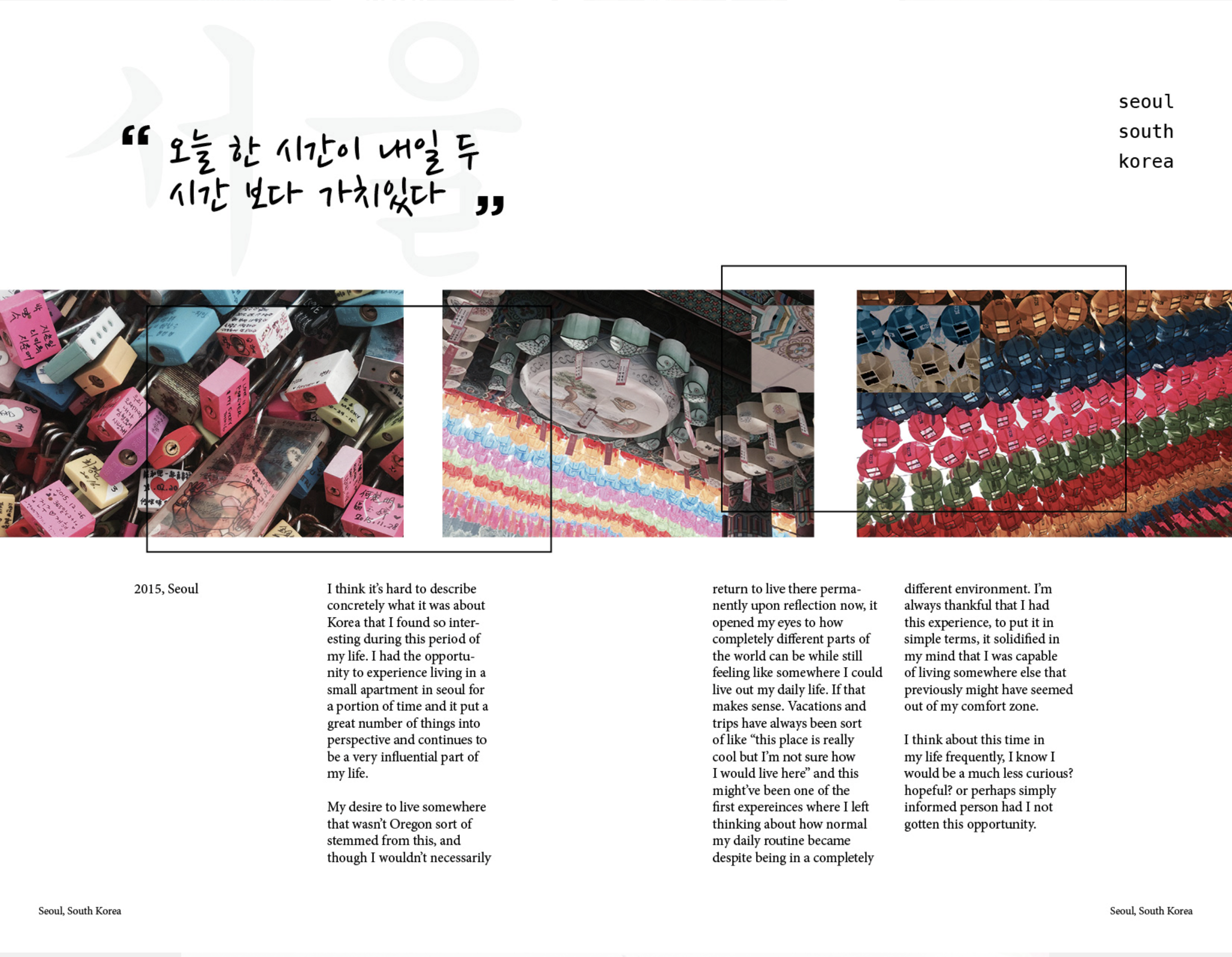
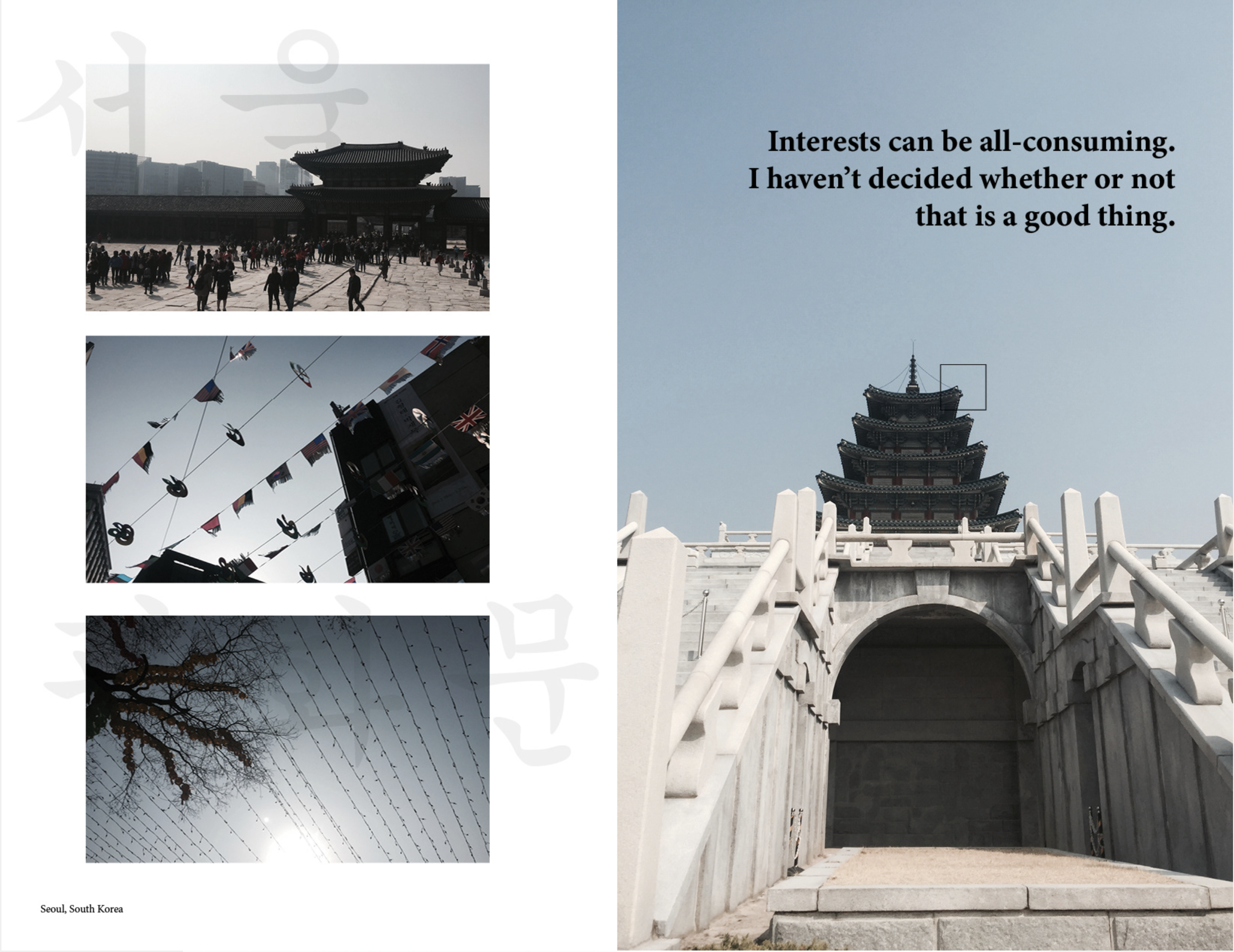
This booklet is representative of my identity. Or at least that is the intention. The process of determining what adjectives I consider to describe who I am was a challenge in itself and frankly, I doubt all the time in the world would really allow me to reach any sure conclusion. But that’s sort of the nature of the thing. So, for the purposes of this project, I’ve distilled some of my more core traits into the locations that developed, or influenced them.
These places are Suzhou, Troutdale, Portland (OR), Seoul, and Tokyo. My booklet follows a timeline, though it isn’t explicitly stated. It starts from my birth up to where I am now, but I haven't provided any dates to represent the passage of time because everything sort of... melds together. Especially when it comes to periods in which self-discovery is taking place. You can't always pinpoint when it begins and when it ends. Assuming it's ended at all.
Anyhow, I spent quite a while pondering on how to go about this project. I didn't feel that my limited illustration skills were up to the challenge so I considered other visual means through which to express what I wanted to. I ended up settling on photography, combined with some type. I always document any trips I take with many, many photographs--whether it's a long-term stay or a few days. I've also recently taken to simply walking around the areas I find myself with a camera, seeing what I can find. I can't say this strategy has yielded much considering my amateurish approach, but the few that I am satisfied with have ended up in this booklet.
Chapters 1 and 2 feature my own photography while chapter 3 is all the work of street photographer Masashi Wakui, someone I greatly admire. I chose to use Masashi's photos instead of mine as they kind of serve to exemplify a change in my design preferences and interests. Most of the past year and any resulting personal projects were heavily influenced by Japanese design, type, and media.
With that explanation aside, I've chosen not to expand on the more abstract, perhaps less easily interpreted spreads and layout choices.
Learn more about LUCY PURVIS
ASHLEY KIM - PIECES
